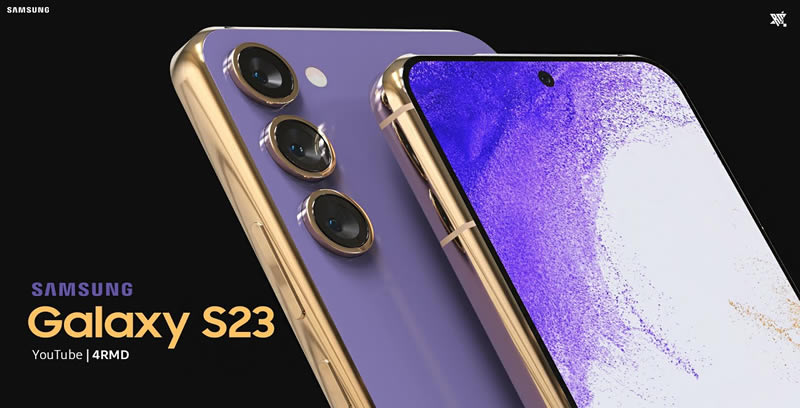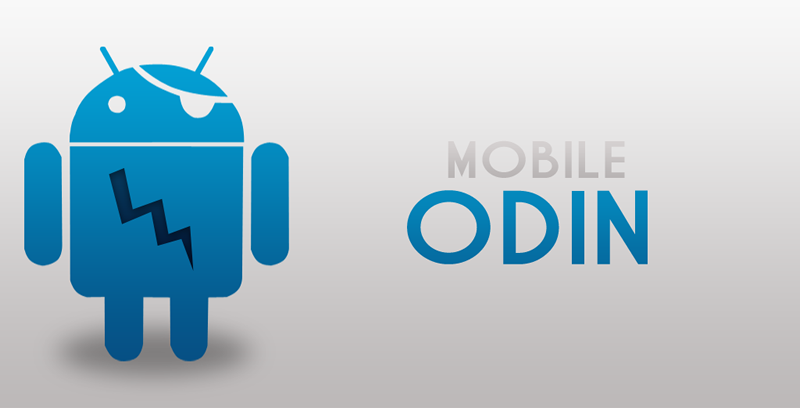Search result
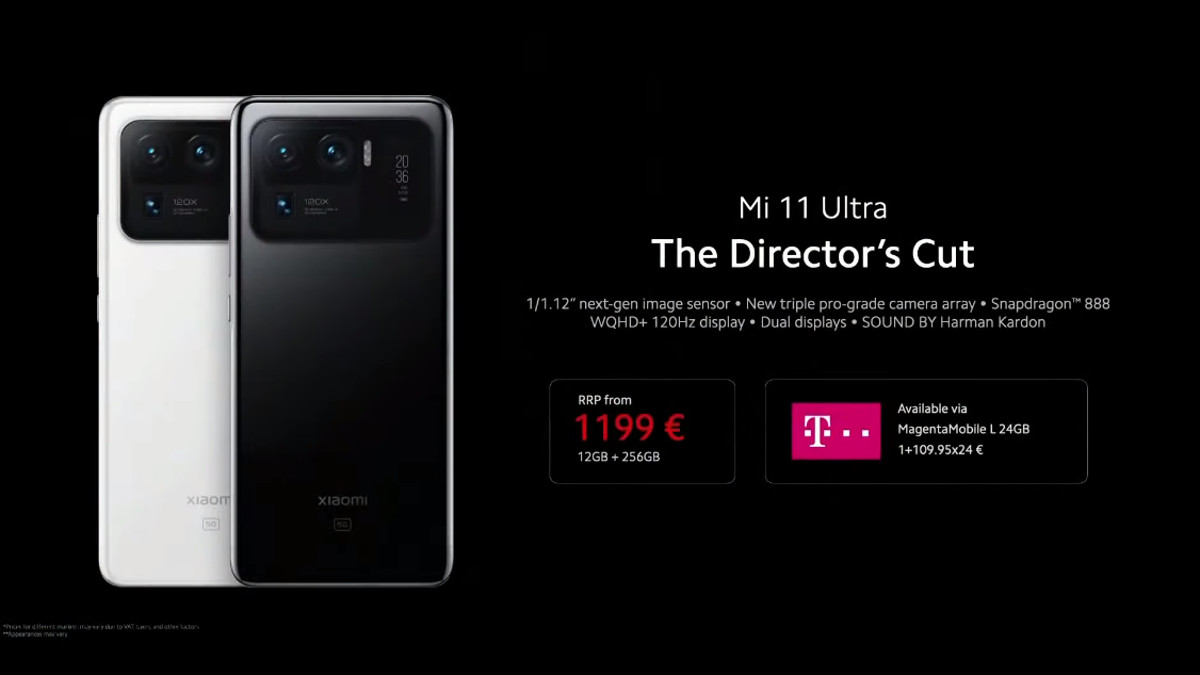
Xiaomi released the Mi 11 a few months ago in December, with an internal release event following in January this year. The company didn't didn't release any premium model at that point, however, today, it introduced two new additions to Mi 11 series that are called Mi 11i and Mi 11 lite. This year's Mi 11 ultra is the high-end premium smartphone that is an upgrade of its predecessor Mi 11 ultra.
According to the leaks, the main selling point of the phone is an 11-inch OLED screen on the rear side of the device to preview selfies, while allowing you to take pictures with the ultra-wide and standard camera sensors. But the screen also provides always-on functionality and display message or phone notifications. The device also comes with a power saver mode that allows you to use the rear display alone. A rear screen isn't just a great design feature, as the phone offers an IP68 rating for the first time.
The phone is powered by a Snapdragon 888 Soc, features a 6.81-inch QHD+OLED screen with 120Hz refresh rate and Gorilla glass protection. The phone comes with a massive 5,000mah battery with 67W wired and 67W wireless charging. The phone charging goes from zero to 100% only in 36 minutes.
Mi 11 Pro is powered by the same processor as Mi 11i, features a 6.67-inch QHD+OLED screen but has IP68 rating for water and dust resistance. The phone comes with the same battery and charging capacity as Mi 11i. Xiaomi's Pro model also delivers a 50MP primary camera, a 13MP ultra-wide sensor, and a 5x 8MP periscope camera. You can also shoot a 1,920fps slow-motion video on the Pro and Ultra models. Other two phones included in the series are simply 4G and 5G variations of Mi 11 lite that features a 6.55-inch FHD+ OLED screen with 90Hz refresh rate, a 4,250mAh battery, and 33W wired charging. The two phones share the same 64MP primary camera sensor specs, with 8MP ultra-wide sensor, and 5MP telephoto macro lens. All of these phones come with Android 11 and MIUI 12 out of the box.

Yesterday, Honor launched its large screen premium smartphone, the Honor X10 max in China. This is the only smartphone by the company which offers such a massive 7.09-inch display screen, ideal for watching movies or playing games. The phone is powered by the MediaTek Density 800 chipset, making it the third such Huawei/Honor device in the past few weeks. The phone follows a similar design as the Honor X10 was announced early in May. This includes a rectangular camera like the Honor X10. The Max variant features a traditional waterdrop display on the display. Thanks to the design team, the company decided to retain the 3.5-mm headphone jack as well as the side-mounted fingerprint scanner and power button, similar to its smaller variant.
The Honor X10 max comes with an RGBW color display replacing the traditional RGB. The additional W stands for white sub-pixels that are supposed to reduce the power consumption of the panel when white color is the display. The company claims that by using RGBW that have successfully reduced the power consumption. The panel also filters out harmful blue light that emits from the mobile phone screen especially at night time.
The Honor X10 max comes with 6GB RAM and 8GB Ram and has up to 128GB internal storage. To keep the prices of the handset, the company decided to skip the 256GB ROM option. The phone features a three-camera system at the rear side including the primary camera on the phone that it 48MP paired with an 8MP ultra-wide and a 2MP depth sensor lens. For taking selfies, you get an 8MP selfie shooter housed in a waterdrop notch. Given the display screen size, the phone needs a large battery as well. You get a 5,000mAh battery with 22.5W fast charging. The X10 comes with a 4,300mAh battery. The Honor X10 max uses 1217 linear stereo speaks with smart PA for amplifying its sound. The phone comes in three colors - Racing blue, black, and silver. The honor X10 max will go on sale from July 3 across all major retailers in China.
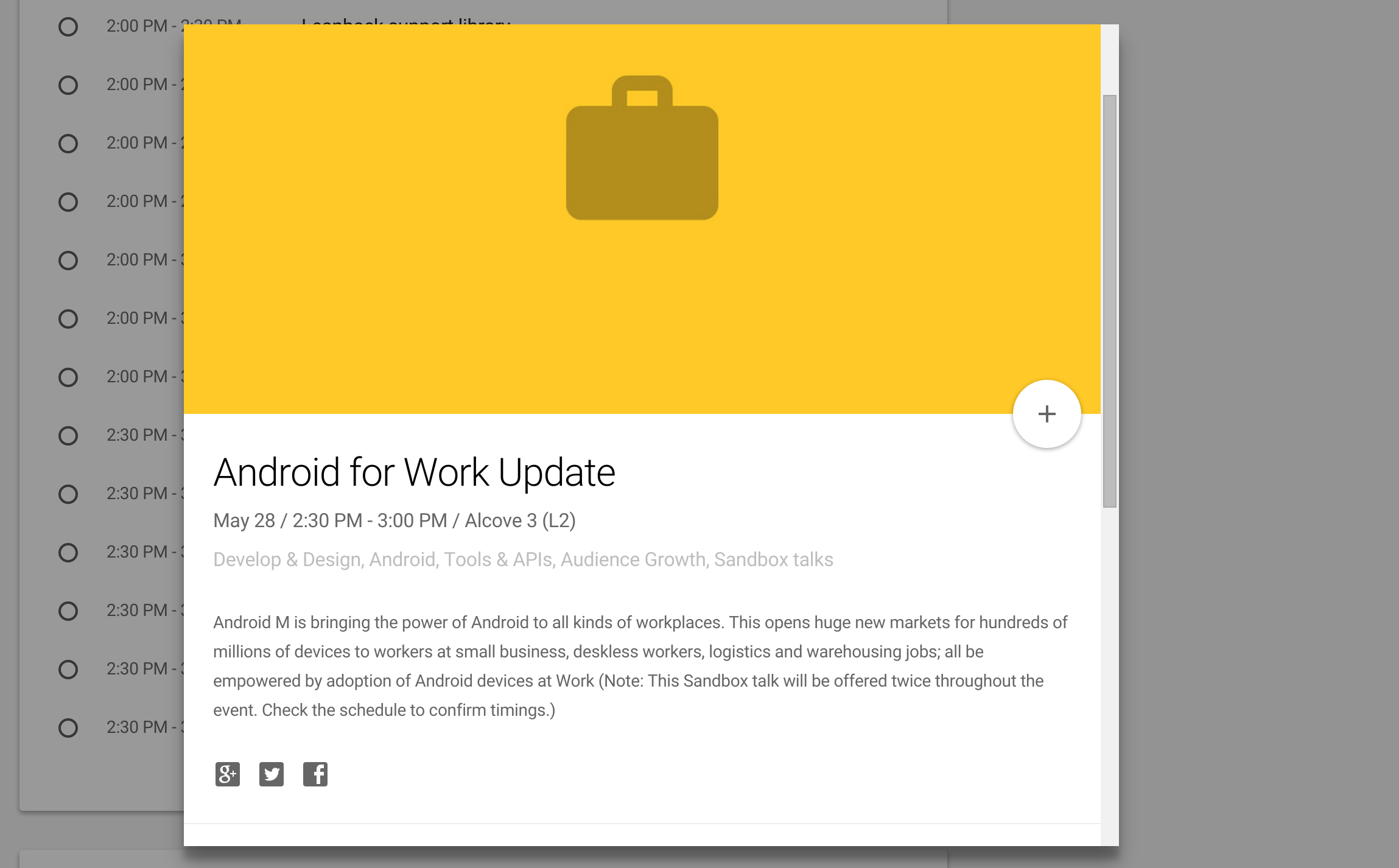
Google has just published the official schedule for the upcoming Google's I/O 2015, taking a closer look at the conference's schedule and sessions, it looks like Android "M" will make an appearance at this year's conference. There's a direct mention under the "Android for Work" session which is scheduled for 2:30 PM PST on the 28th (Screenshot above).

Also the "What's New in Android" session which is scheduled for 1:00 PM also tip-off that Google is getting ready to unveil something NEW related to Android OS. Last year's Google I/O (2014), the company showed us the Lollipop preview (Android "L"). Android "M" is rumored to be named as "Muffin".

WELL Google is fast, what makes this even more official... The "Android for Work session" has already disappeared from the conference schedule, Let's wait and see!
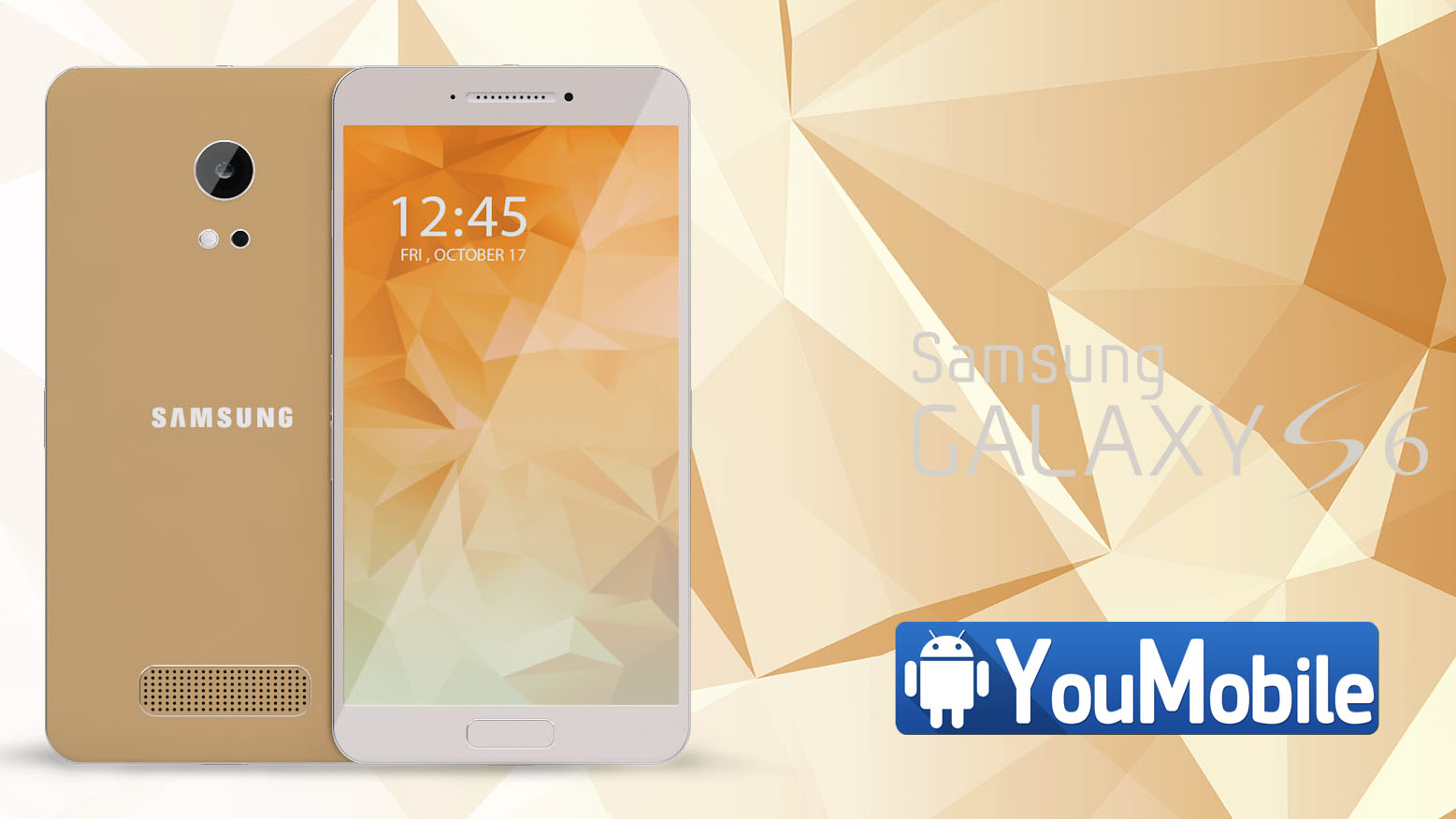
It looks like Samsung has finished working on it's upcoming flagship, the Galaxy S6. According to confirmed reports from Business Korea, Samsung Galaxy S6 has entered Trial production on Samsung's Vietnamese plant, the device will enter Mass production starting Next month.
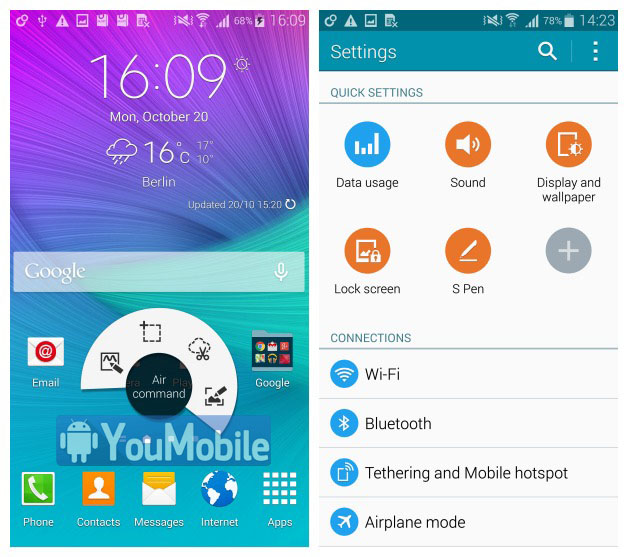
In other hand, Samsung finally listened to the many of it users who are criticizing its Android overlay Interface "TouchWiz UX". Reports suggests that the Galaxy S6 will have a New TouchWiz with less customization to look very close to the Android's default UI, the Korean giant decided to focus more on core features and rethinking the inclusion of more obscure ones
Samsung will be revealing the Galaxy S6 on the MWC 2015 on early March. The flagship will be Available on two variants, Regular and Edge. The Galaxy S6 Edge will pack the same specs as the regular but with a curved screen.
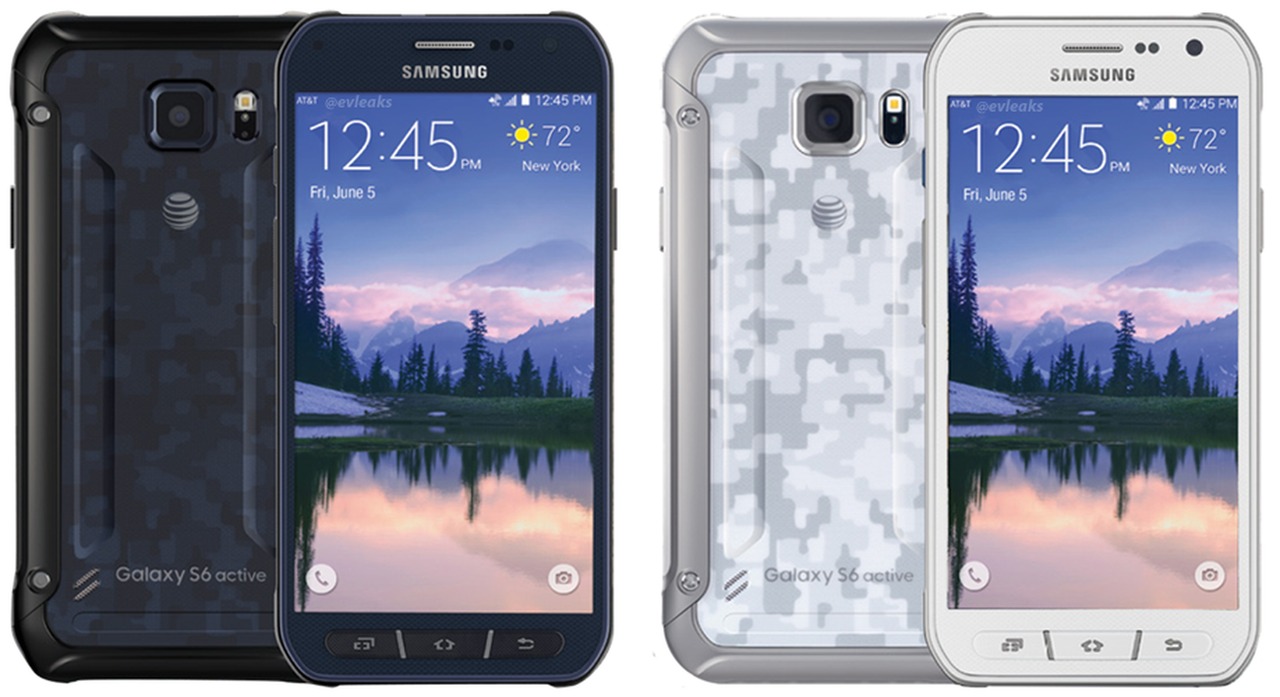
AT&T just announced its Samsung Galaxy S6 Active with the same 5.1" QHD Super AMOLED display and Exynos 7420 CPU chipset as the original Galaxy S6. The S6 Active adds IP68 and Mil-STD-810G-certified protection that can submerge the handset to up to 1.5 meters for up to 30 minutes and it's completely dust-proof along with radiation, thermal and shock protection.
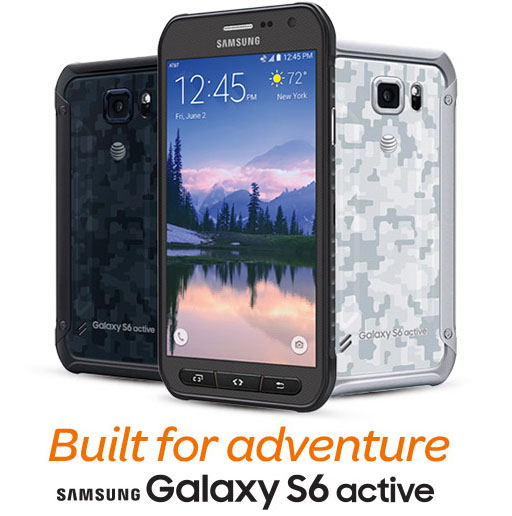
Galaxy S6 active also brings another upgrade over its vanilla sibling it comes with a 3,500 mAh battery a substantial 40% increase in capacity and there's also built-in wireless charging. Everything else is the same as the Original Samsung Galaxy S6 in terms of software.
The Samsung Galaxy S6 active will go on sale in Camo White, Camo Blue, or Gray starting June 12. You can get it for $0 down on AT&T Next for $23.17 with 30 device payments on Next SM 243, $28.96 per month at 24 payments on Next 18, or $34.75 per month at 20 payments on Next 12.
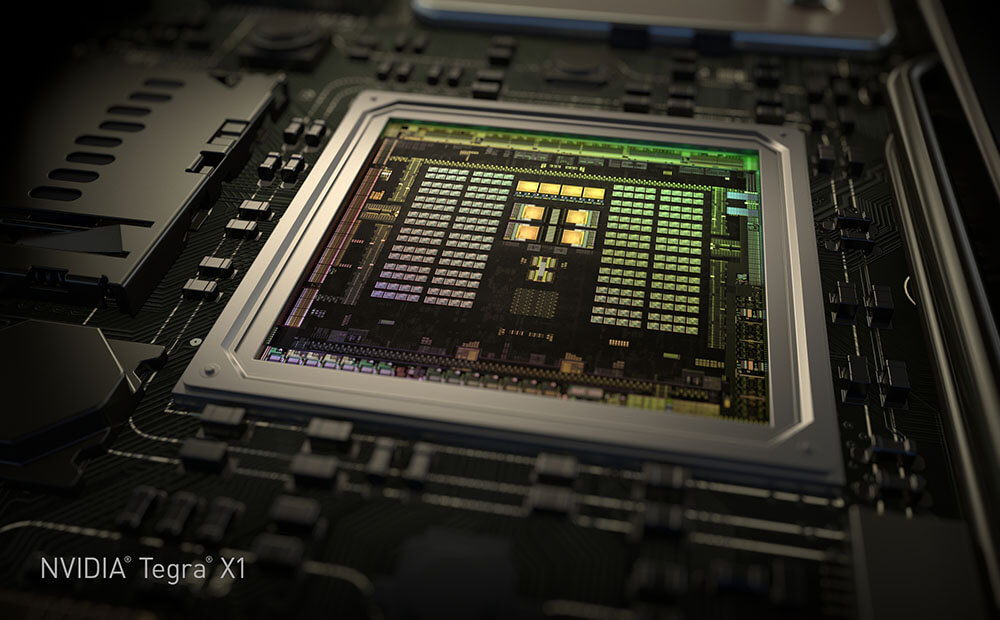
Today at CES 2015, NVIDIA has announced a brand new mobile processor for 2015 "Tegra X1". The X1 is the first mobile processor in the world capable of 1 Teraflop floating point performance, which almost puts it in the same league as desktop class GPU and current generation gaming consoles. The X1 has a new octa-core CPU cluster.
On the GPU side, NVIDIA has turned to using its latest generation Maxwell architecture, which we saw on their flagship desktop GPU this year, the GTX 980. Although not quite in the same league performance-wise, the 256 CUDA core GPU in the X1 is twice as powerful as the Kepler-based GPU on the K1. It's also capable of 1 teraflop of floating point performance. To put that into perspective, the Xbox One is capable of 1.3 teraflop while the PS4 can do 1.84 teraflop.
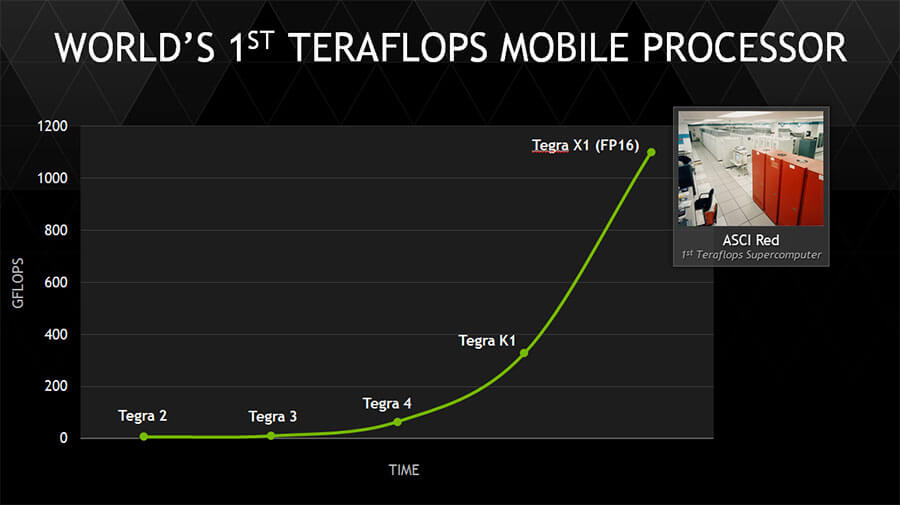
The X1 has a 64-bit wide LPDDR4 memory capable of peak memory bandwidth of 25.6GB/s. It is also capable of outputting 3840x2160, that's 4K @ 60fps, to an internal or external display with support for HDMI 2.0 and HDCP 2.2. X1 also has improved codec supports and can decode VP9, VP8, H.264, H.265 (10-bit) at 2160p60, along with 600 MP/s (megapixels per second) JPEG encode and decode.
Tegra X1 also supports all major graphics standards, including Unreal Engine 4, DirectX 12, OpenGL 4.5, CUDA, OpenGL ES 3.1 and the Android Extension Pack. Mobile devices running Tegra X1 are expected in the first half of 2015 with automobiles leveraging the DRIVE PX and CX in the second half of 2015.

HTC is more recognized for its virtual reality gadgets than smartphones. While it remains much more focused on VR stuff, the company has announced a new phone for India and Thailand called the HTC wildfire. The company hasn't shown any activity for a long time and after many months of silence in the mobile industry, HTC's new CEO Yves Maitre recently stated in an interview that the company will release a 5G smartphone this year. As per rumors, HTC will coordinate with Qualcomm to make a 5G enabled phone.
HTC U19e and Desire 19+ were the last phones launched under the company's banner. It is announced that the HTC wildfire X will be released with the Indian-first approach. However, the Wildfire X isn't completely manufactured by HTC, as the Wildfire X has been made by Lava initially. The company has agreed with Indian companies like Lava, Micromax, and Karbonn to use its licensed brand name for new phones. The new phone is similar to what Lava made. In India, it will be made by one of HTC's brand partners. The Thailand/international variant may be made by HTC itself, or it may be developed by another local OEM/ODM.
The phone is 163.2 x 77.8 x 8.9 mm and weighs only 186g. It has a 6.52-inch HD+ LCD with 1560 x 720 pixels. The device is powered by MediaTek Helio P23 8x ARM Cortex-A52 cores clocked at 2.0GHz and Mali-G72MP1 GPU. The smartphone has 2GB RAM and 32GB storage that can be further extended by microSD card slot. The phone comes with a huge 4,000mAh battery that is good enough to get you through a day even if you play games or watch YouTube videos on it. The front camera is 8MP with f/2.0 and allows 1080p video recording. For connectivity, it offers Bluetooth 4.2 and Wi-Fi. It supports 2G and 3G network connectivity.
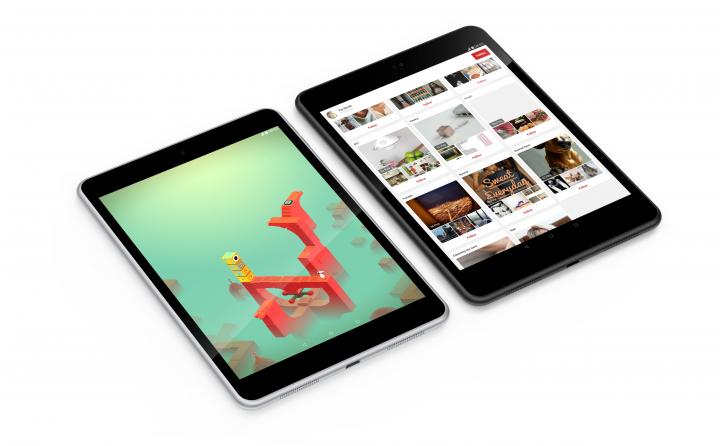
It may be surprising, but this is true! Nokia has just launched a New Android Tablet, named it Nokia N1. The tablet is powerd by Intel Atom CPU running Android 5.0 Lollipop and Nokia Z Launcher UI on top of it.
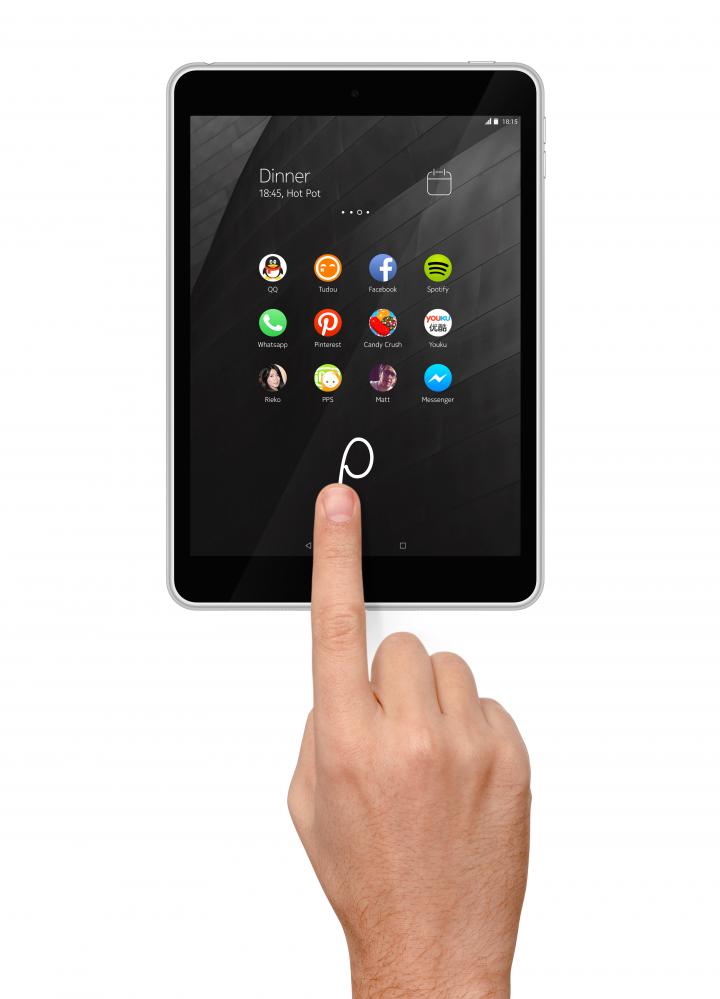
Nokia N1 has a 7.9-inch IPS QHD display with a dual-speakers on its bottom for great sound experience, I don't need to tell you about the build quality of Nokia products.
.jpg)
Here are the Main Specs of the device:
- 7.9-inch, 2048x1536 (4:3) IPS LCD with Gorilla Glass 3 and fully laminated zero air gap display.
- 64-bit 2.3GHz Intel Atom Z3580 processor, PowerVR G6430.
- GPU with 2GB RAM.
- 32GB built-in memory (non-expandable).
- 8 megapixel rear camera, 5 megapixel front camera.
- Dual channel 802.11a/b/g/n/ac Wi-Fi with MIMO, Bluetooth 4.0.
- Micro-USB 2.0 with a Type-C reversible connector.
- Stereo speakers.
- 5300mAh battery.
- Unibody aluminum design; available in Natural Aluminum or Lava Gray colors.
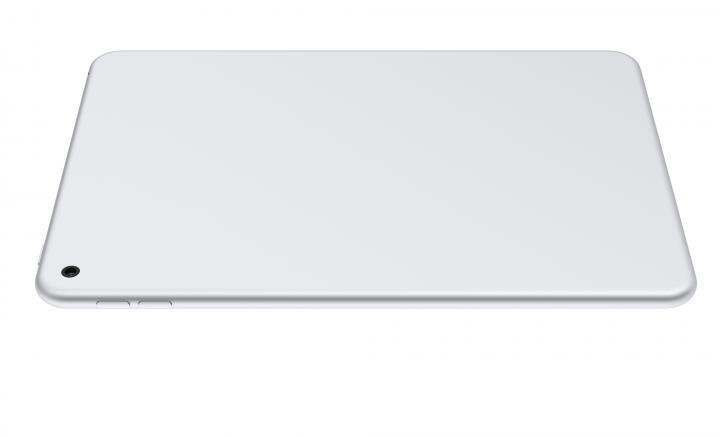
The Nokia N1 will be launched in China first in Q1,2015 for an estimated price of $249 and in other markets at a later date.
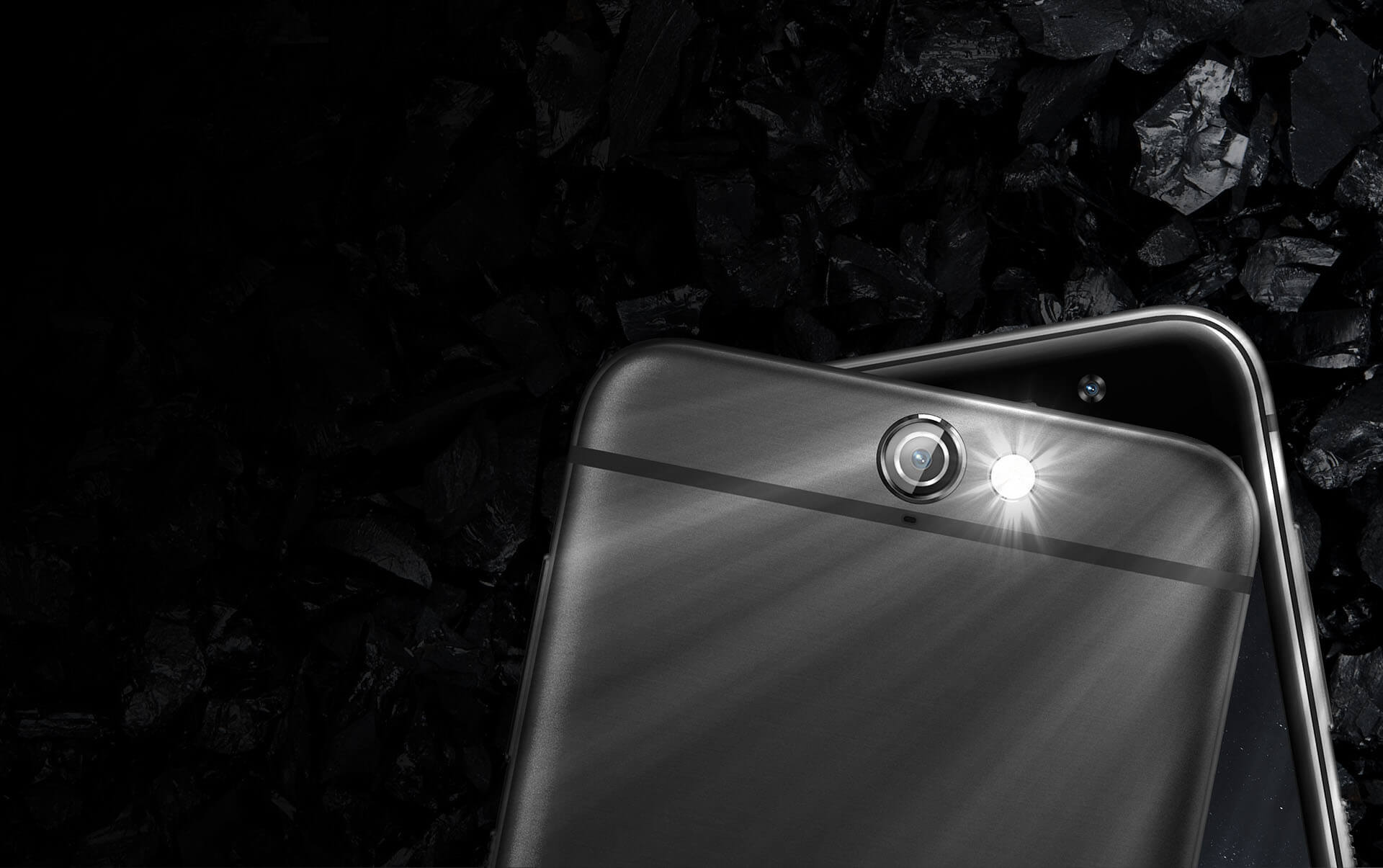
HTC One A9 is latest smartphone from HTC and the first non-Nexus device to launch with Android 6.0 Marshmallow. The handset is supposed to freshen up the HTC portfolio and give another chance of the otherwise struggling One lineup.
The HTC One A9 is built around a 5" AMOLED screen of 1080p resolution and is the first to run on the Snapdragon 617 chip. The SoC employs an octa-core processor with four Cortex-A53 cores at 1.5GHz and another four A53 ticking at 1.2GHz, Adreno 405 GPU and 2 or 3 GB of RAM depending on the version.
HTC says it designed the One A9 from scratch, blending signature elements of its previous phones, such as the antenna stripes on the back. The A9's unibody is made entirely of metal, with 2.5D Gorilla Glass 4 protective glass shielding the entire front.
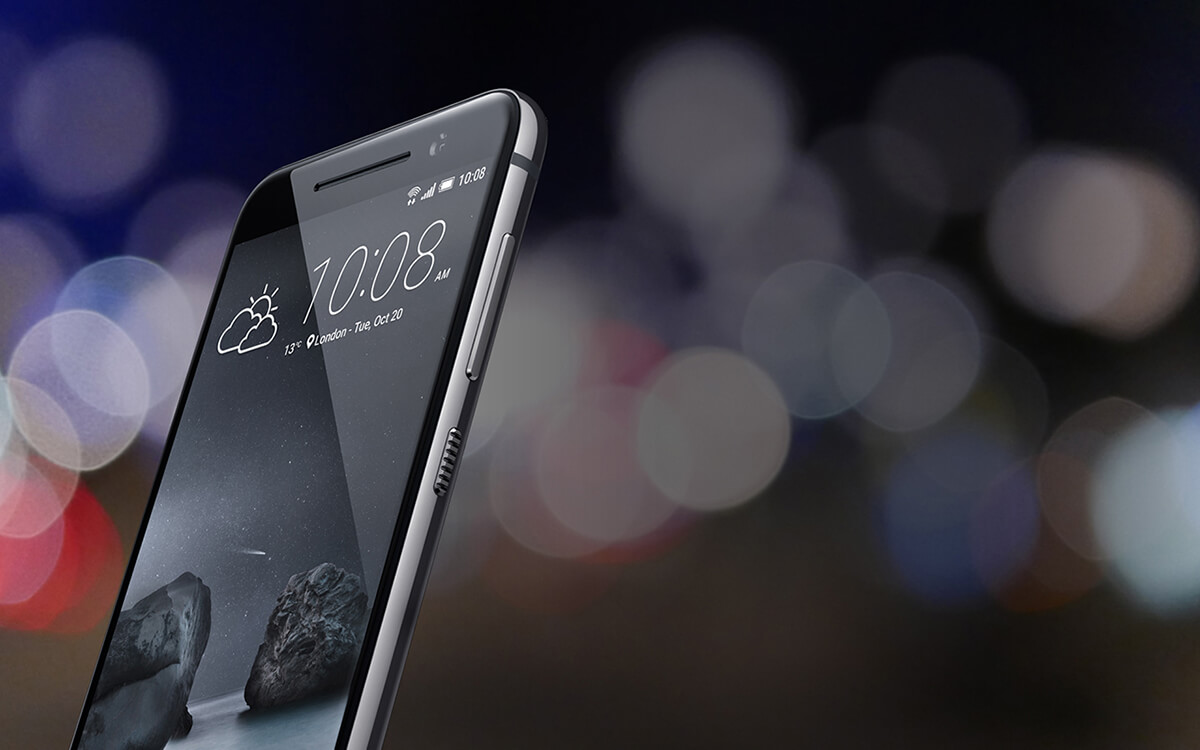
HTC One A9 Specifications
HTC One A9 is quite thin at just 7.2mm of thickness and it seems like a pocket-friendly chap with the 5" screen and the 143g of weight.
The main camera of the One A9 packs 13MP sensor with optical image stabilization and 1080p video recording (the Snapdragon 617 doesn't support 4K). It supports RAW capturing and Hyperlapse (stabilized time-lapse) videos. The front snapper has a 4MP UltraPixel sensor and a bright F/2.0 aperture.
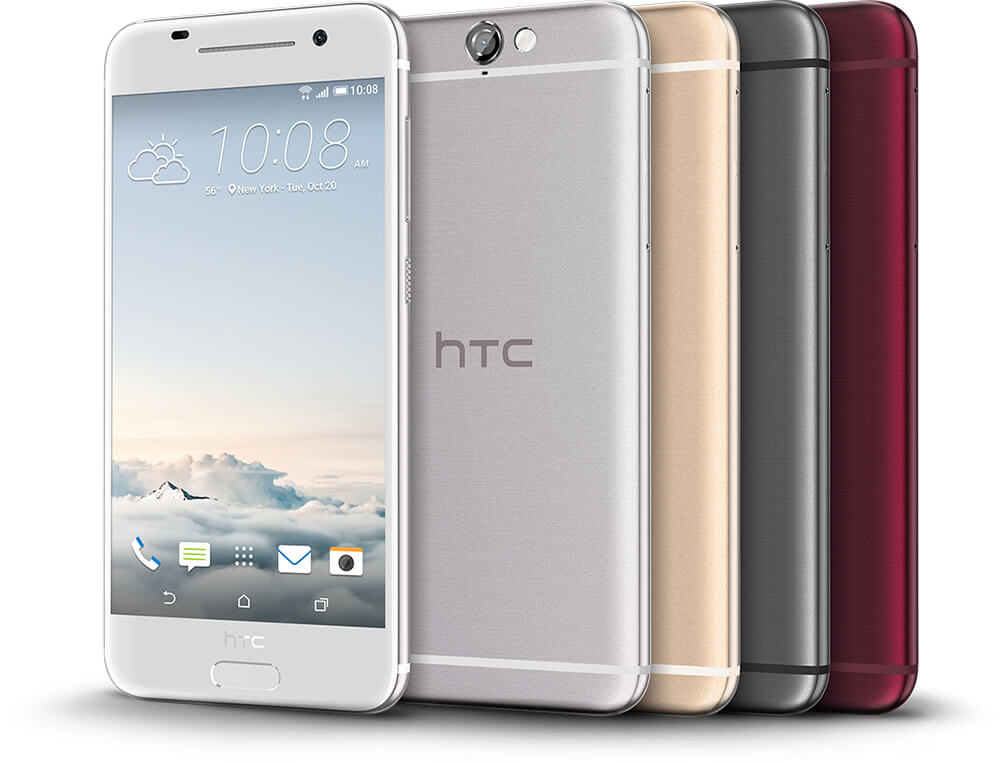
HTC One A9 comes with either 16 or 32GB of storage, expandable via a microSD slot. LTE connectivity is naturally supported, while a new high-power DAC that promises unmatched audio experience.
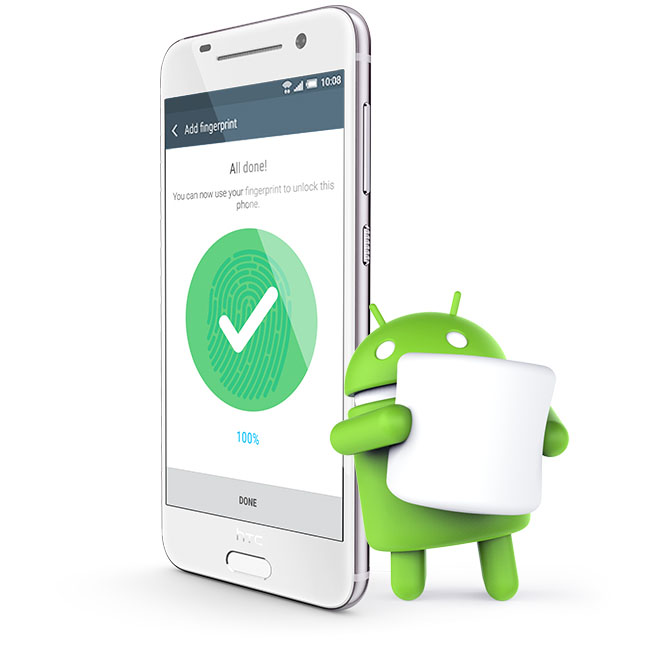
The Home key of the HTC One A9 doubles as an always-on fingerprint scanner, which will unlock your device even while the display is turned off. You can also use the sensor for Play Store payments thanks to the Android 6.0 Marshmallow running on the A9 right out of the box.
HTC One A9 is powered by a 2150 mAh battery, which supports Quick Charge 2.0 (and 3.0), though you'll have to buy a proper 15W HTC charger if you want to charge your battery lightning fast.

HTC One A9 will be available worldwide in a price of 600 EURO (about $580) by Early November,2015.
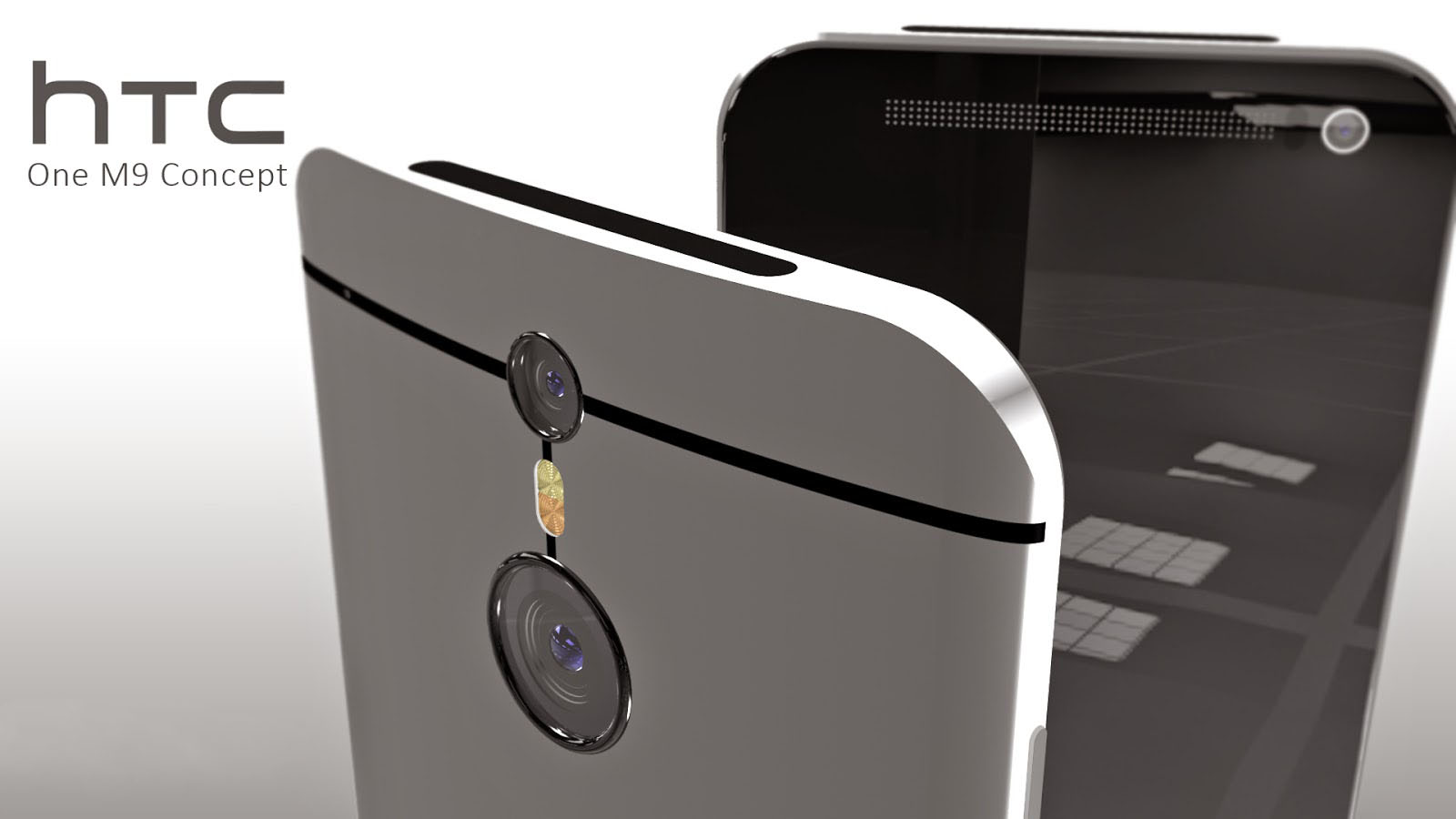
Back in March of 2014, HTC chose to unveil its most recent flagship, the One M8, in New York and London, at its own dedicated event. For whatever reason, the company obviously didn't feel like an announcement at CES (January) or MWC (March) was appropriate, and according to @upleaks, HTC may be planning a repeat of that arrangement with the oft-rumored Hima One M9.
If you're just catching up on Hima, here's what we know so far. The device will have a 5-inch 1080 x 1920 resolution display, a quad-core, 64-bit Qualcomm Snapdragon 810 processor, 3GB RAM, a 2840 mAh battery, and surprise-surprise, a 20.7-megapixel camera.
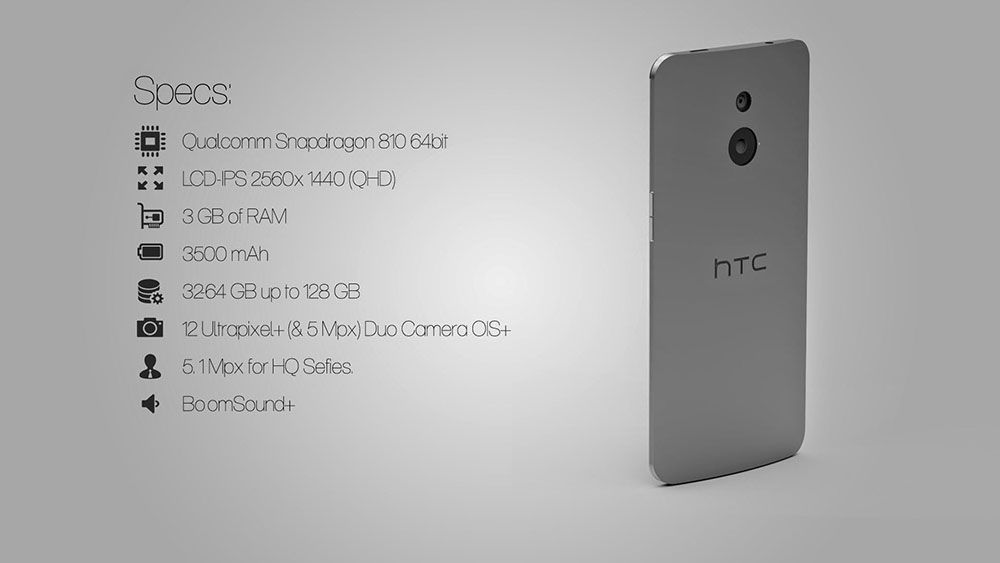
That's right, it would appear that HTC may very well be ditching the UltraPixel tech that's been keeping its devices a step behind competitors, and that's definitely good news. The One M9 is expected to come in the typical HTC color palette: Gray, Silver, and Gold.
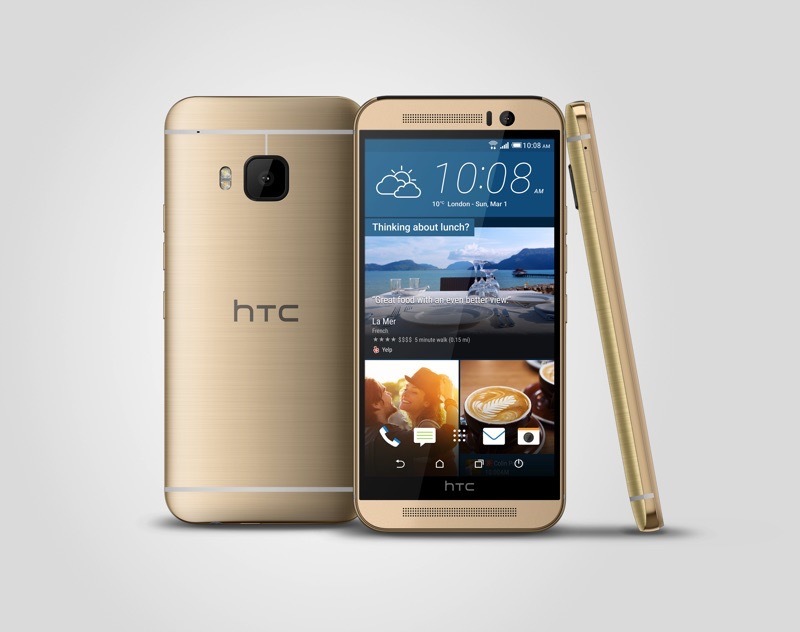
At the MWC 2015, HTC has just officially announced its 2015 flagship, HTC One M9, with a new refined design that features a Dual-tone Metal Unibody, scratch-resistant coating and sapphire glass on the camera lens.
HTC One M9 comes with refined design with less part count, dual anodization, and scratch-resistant coating and sapphire glass on the camera lens. While it looks a lot like the One (M8), the new One M9 design is more minimalistic and the smartphone is lighter and smaller. It has a single-part front bezel, new placement for the Power/Lock key, an improved volume rocker, and brand new color options.
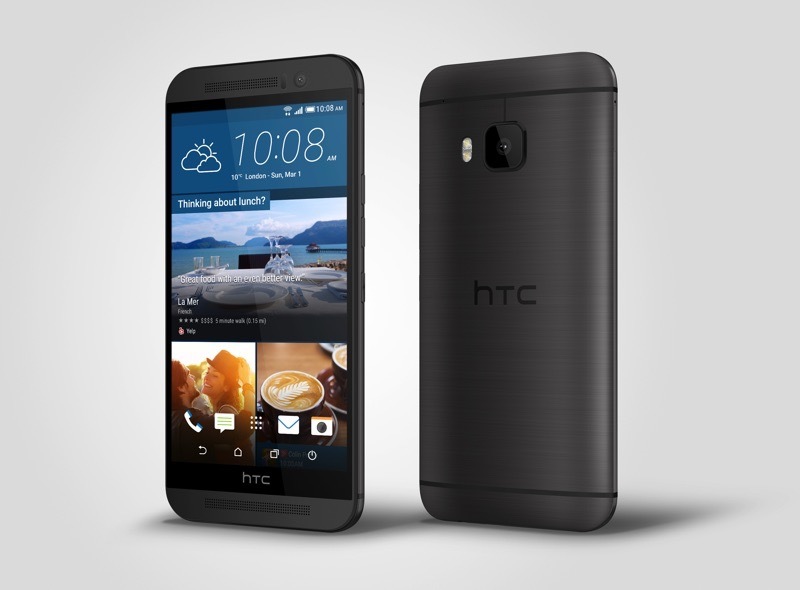
HTC One M9 packs a 5" 1080p display the same unit from One (M8) Super LCD3 with minor improvements on the technology and color rendering. The highlight of the front are the traditional BoomSound stereo speakers, now improved further by 5.1 Dolby surround Sound.
HTC One M9 Specifications/Price
The One M9 is powered by the latest Qualcomm Snapdragon 810 platform - an octa-core 64-bit processor with four Cortex-A57 cores at 2.0GHz and four Cortex-A53 working at 1.5GHz. The new Adreno 430 is responsible for the graphics, while the 3GB RAM will help with the multi-tasking.
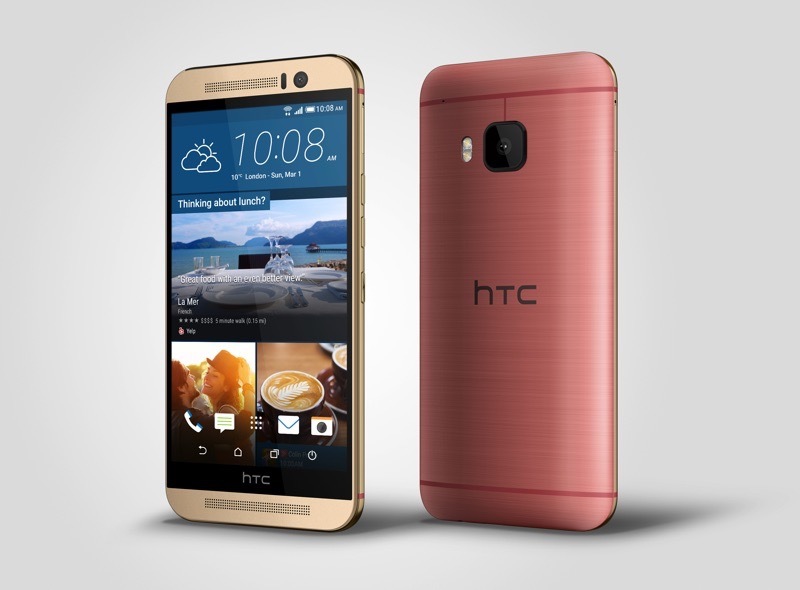
HTC One M9 runs on Android 5.0 Lollipop enhanced with the new HTC Sense 7 UI. HTC Blinkfeed is a major part of the new Sense and now content from the aggregator will be displayed on the lockscreen as well. The updated service also uses location specific suggestions, thanks to a new partnership with Yelp, and will be able to gives you various tips for nearby restaurants.
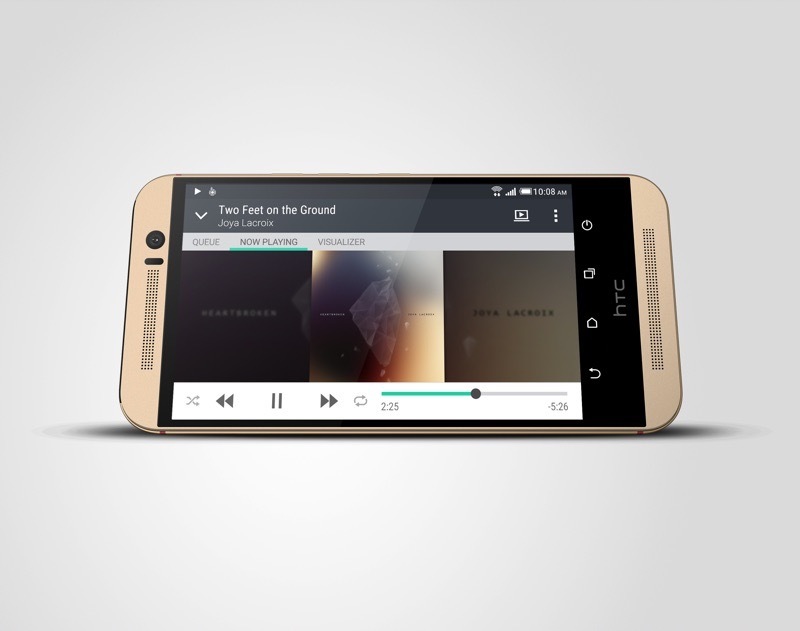
The entire concept of HTC Sense has changed and now the launcher supports themes, which will be able to change its looks completely backgrounds, colors, icons, even the keyboard. There will be a theme generator, which will support automatic theme generation by inputting just a single image.
HTC One M9 Specifications/Price
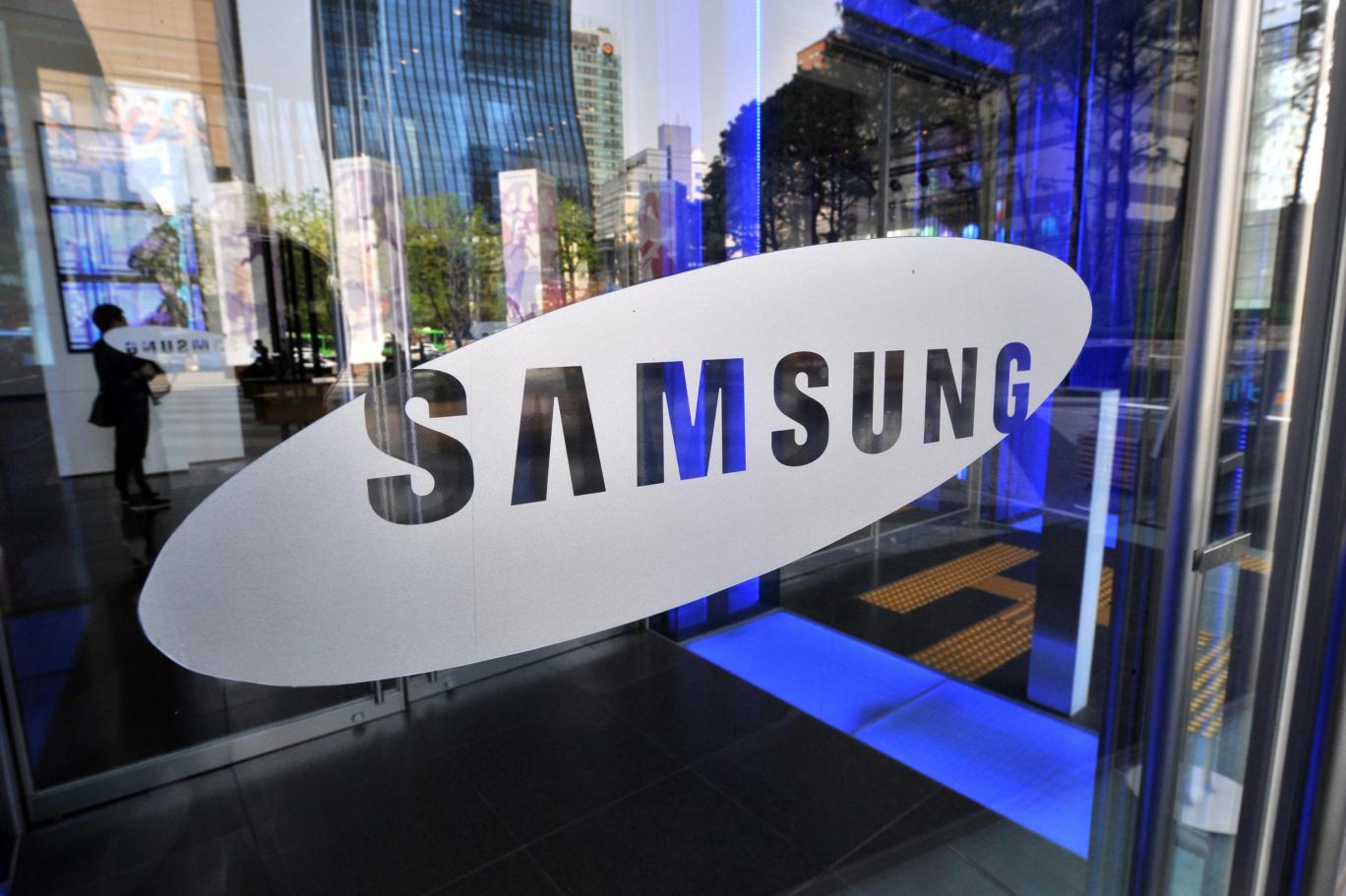
Latest rumor of the Samsung Galaxy S7 point to an announcement date of late February at it'sGalaxy Unpacked event, same as the dates of the Mobile World Congress 2016 . This would be the same approach of the corporation in previous years, as the Korean consumer electronics giant has utilized the Mobile World Congress in Barcelona to announce Galaxy S devices in recent years.
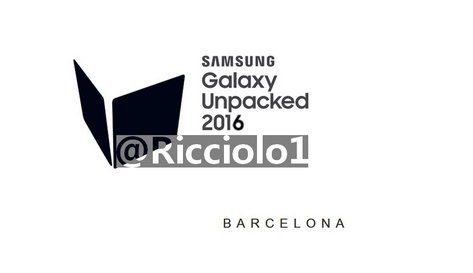
Another rumor that has emerged in recent weeks is the suggestion that Samsung will release three models of the Galaxy S7 simultaneously. The Samsung product range has been a little complicated in recent releases, and it is suggested that the Korean company will simplify the situation by producing a Galaxy S7, Galaxy S7 Edge and Galaxy S7 Edge+, and releasing them at the same time.
Network of the Galaxy S7 will likely complete with Cat 12 LTE, and that this mostly likely be supported by both the Qualcomm Snapdragon 820 and Samsung's own Exynos 8990 processor. It appears increasingly likely that Samsung will revert to its old policy of releasing two separate Galaxy S units in different regions of the world, with the East Asian marketplace likely to receive its proprietary technology.
Samsung is particularly known for packing its devices with the highest specifications possible, and the company has pioneered numerous innovations in recent years. The most notable of these is the curved screen technology that is now almost indelibly associated with Samsung, we just going to have to wait and see how innovative how Galaxy S7 is.
Thaks Ricciolo
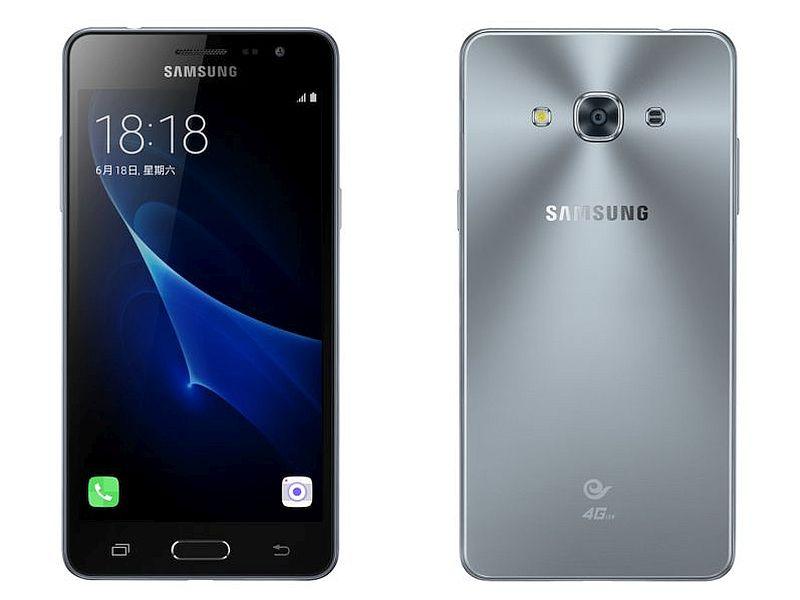
In the past few years, we have seen Samsung catering to the Chinese market with a lot of attention. They have had recent exclusive releases like the Galaxy A9 Pro and in the past, the very A-series was launched in China first. Samsung just launched another smartphone that will be exclusive to China, at least for now. This is the brawnier brother of the J3 2016 that the OEM released earlier, expectedly named, J3 Pro.
The J3 Pro will feature Samsung's Super AMOLED panel, albeit at 720p resolution on its 5-inch screen. Samsung is powering the device with the dated Snapdragon 410 SoC and 2GB of RAM. There will be only a 16 gig variant, but with expandable memory up to 128GB via SD card. The smartphone will support dual SIM and unfortunately, it will run on Android Lollipop 5.1.1 out of the box. There will be an 8-megapixel rear camera with f/2.0 aperture and a 5-megapixel selfie cam. To power all this, Samsung has endowed the J3 Pro with a healthy 2,650 mAh battery.
All in all, we think that Samsung will have a hard time finding a good market for the J3 Pro in China, which is the home to the kings of budget smartphone manufacturers like Xiaomi and OnePlus.
Author: Saikat Kar (tech-enthusiast)
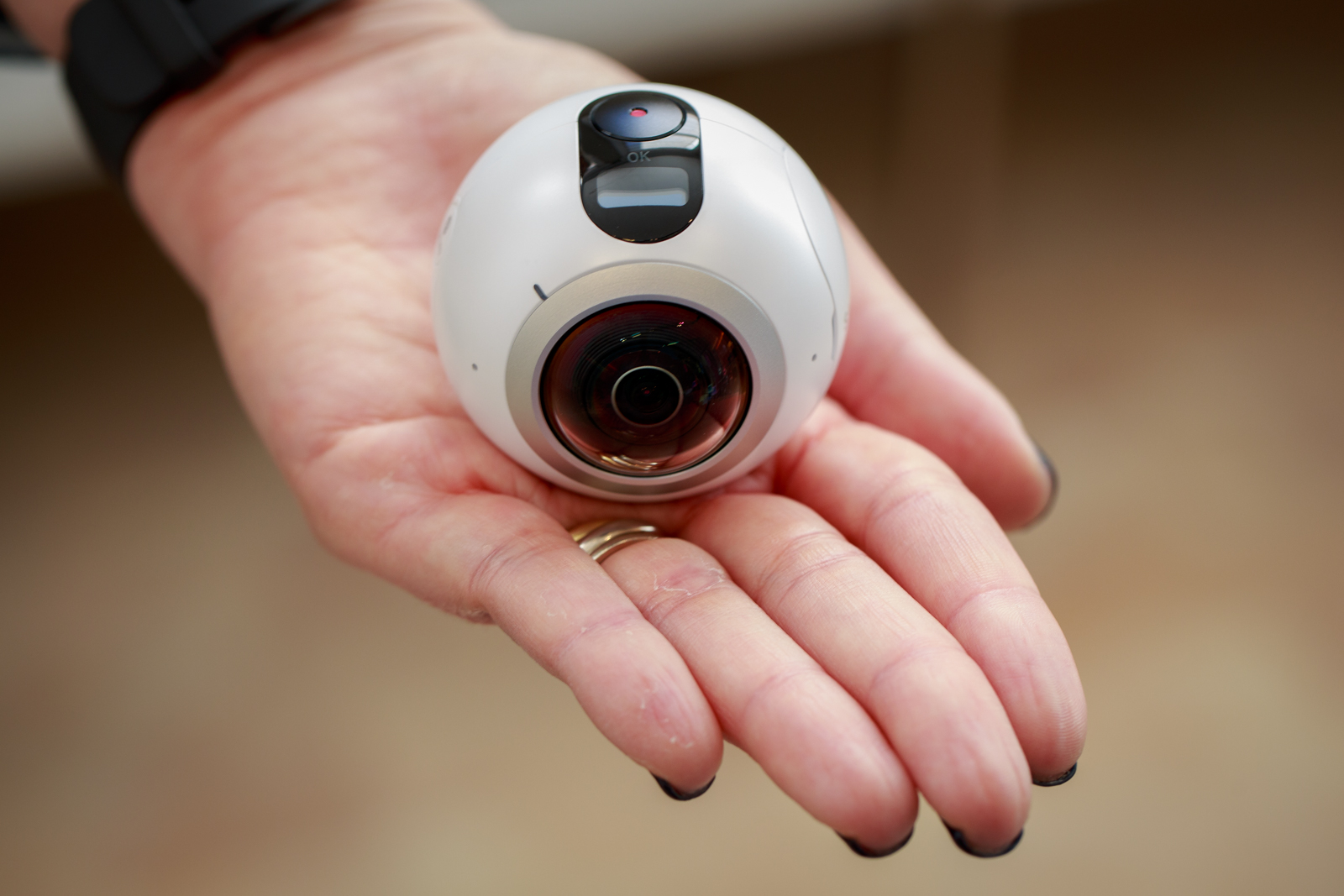
Barcelona was the site of much interest from Samsung device lovers who wanted to see what the SE Asian company had in store for consumers. A couple of flagship devices and a 360-degree virtual reality camera received much of the buzz at the industry event.
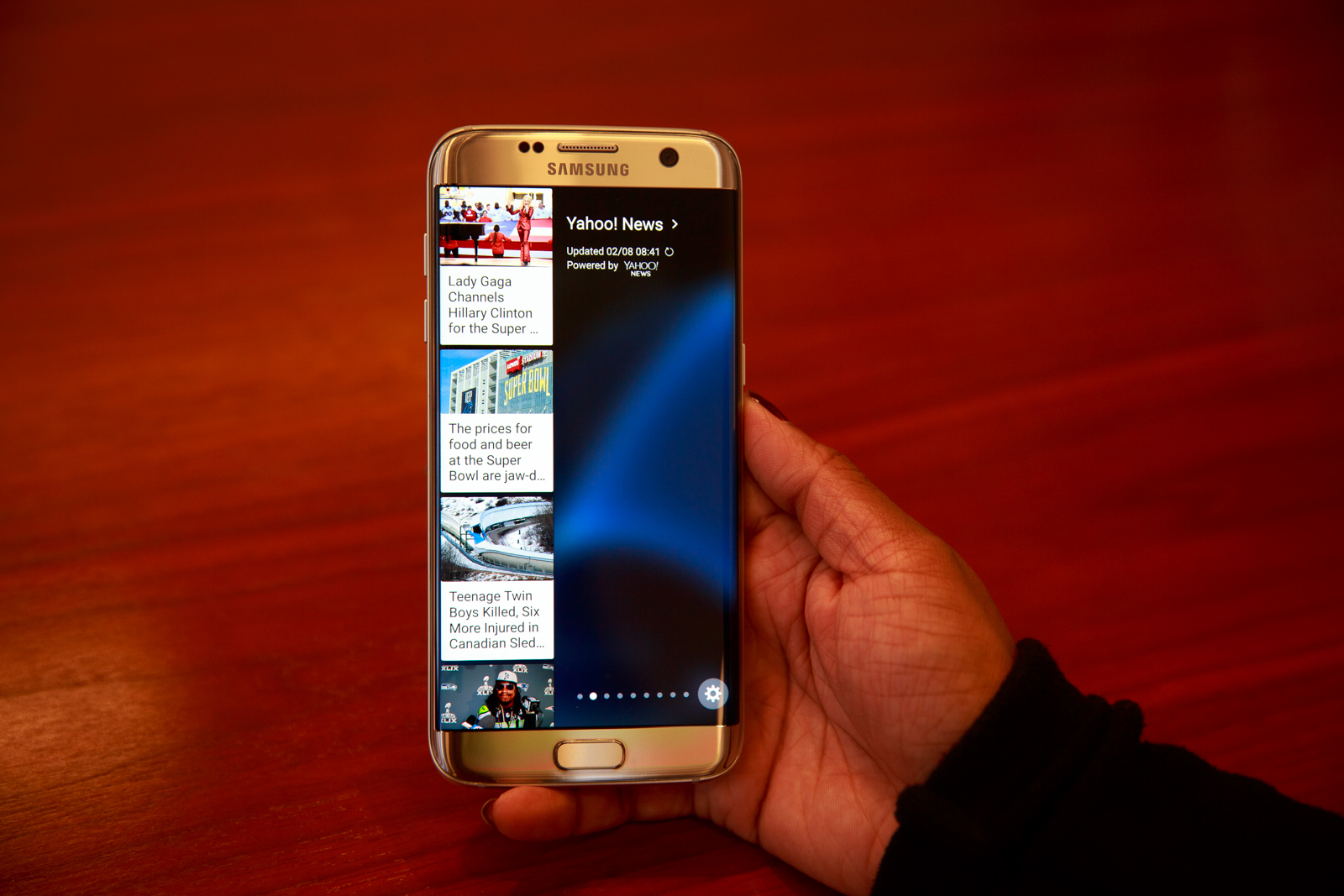
The Galaxy S7 could easily be mistaken for the Galaxy S6. Okay, so it has been updated with a more metallic look and it is sleeker too, but it is unmistakably an S series device. Fans of the S series device will also be pleased to learn that Samsung have been listening and return some of the features removed from the S6. Namely, the microSD card slot has made a welcome return and storage limits are bumped up to 200GB. The water resistance is also back, so if you spill a coffee on the phone, it might just survive. Remember, we didn't say waterproof, it's only water resistant.
The camera drops from 16-megapixels to 12-megapixels, but the larger pixels and f/1.7 aperture lets in more light for improved low-light performance. The autofocus is faster and a front-facing selfie flashes the screen to provide more light. The 5.1-inch Super AMOLED screen and Snapdragon 820 SoC makes the phone hum along.
The Galaxy S7 Edge also gets the 12-megapixel camera and microSD card slot. It also have more curves in the design and space for notifications. The icons and tabs are larger to match its 5.5-inch screen. The processor is the same as with the S7.
Both devices are released on March 11 and will be compatible with the Samsung Gear VR headset which is offered as a bonus for anyone pre-ordering either device.
The Samsung Gear 360 is a 30-megapixel 360-degree camera that uses 2 fish-eye lenses to capture images and video. Its resolution is 3,820x1,920 which is almost the 4K standard. Each f/2.0 fish-eye lenses covers 195-degrees and images can be stitched together using the S7 or S7 edge. The device is not expected for release until the summer season.
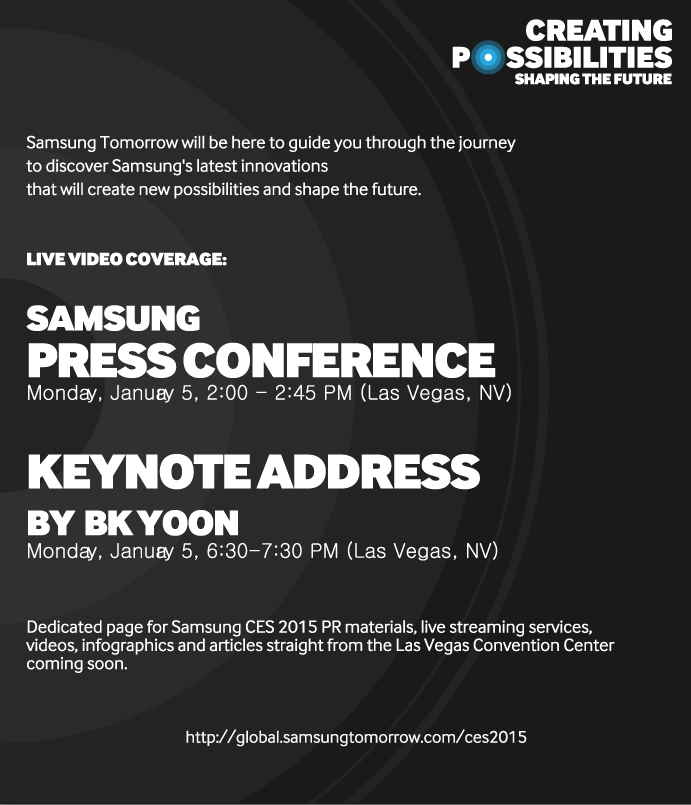
Today, Samsung officially unveil its schedule for CES 2015. The huge trade show is fast approaching, as we're now exactly one month away from its debut.
January,5th is when Samsung will hold a press conference at CES, starting at 2 pm Las Vegas Time. This will be followed by a keynote address by BK Yoon, Samsung Electronics CEO and President, at 6:30 pm.
On the same day also, Sony will hold its CES presentation, though that will start at 5 pm. So this is shaping up to be a pretty crowded day, as the day before the trade show's doors open has always been.

We knew that the American and certain other versions of the Galaxy S9 and S9+ is going to be powered by the Qualcomm Snapdragon 845 and now we also know which Exynos chip is going to power the international variants of the two handsets. The Exynos 9810 is what we are looking forward to being unveiled at the CES 2018 next week and it's going to be a very powerful chip.
With a maximum clock speed of 2.9GHz on the four performance cores, the Exynos 9810 is expected to be 40% more powerful than the current gen Exynos 8895 which is powering the S8, S8+ and the Note 8. The included Mali G-72 GPU will also be 20% more capable as compared to its predecessor, the Mali G-71. AI-based depth sensing and hybrid face detection via software and hardware are going to be the highlights of this chip though, rather than just the power. What this means is that we will probably see a more enhanced version of face detection, similar to what we have seen in 2017 on the Apple iPhone X. The chip will also have an in-built 1.2 Gbps LTE modem with 1.2Gbps download and 200Mbps upload speed capabilities.
Saikat Kar (tech-enthusiast)

The Galaxy S10 series of smartphones are now less than two weeks away from launch date, as Samsung has now confirmed that they are going to unveil the Galaxy S10 series on February 20, at an exclusive Samsung Unpacked event in San Francisco. Even more importantly, we now have our first look at a live Galaxy S10+ model, that reportedly comes from Saudi Arabia. Looking at the images, we are relieved to see that the design isn't as boxy as it looked in the casemaker's models that we showed you yesterday!

If the images are to be believed, then the Galaxy S10+ at least, will indeed sport an in-display fingerprint scanner after all. There's also the expected tri-camera module at the back and it does look like there will be a Pearly White color option this year after all.


Via: SamMobile
Saikat Kar

Usually, smartphone manufacturers try not to reveal too much about the phone while they are still in the development phase and yet to be released. But Google takes pride in sharing the details of its upcoming smartphones. After the disastrous Pixel 3 launch, the company revealed some of the Pixel 4's signature features several weeks before the official "Made by Google" event. Fast-forward to the present day and its mid-February. Although, we still have some 8 months from the Pixel 5 launch event the first Pixel 5 leak is about to surface.
Many would agree that Google has been copying the iPhone ever since it launched the first Pixel but it hasn't been able to reach the success of Apple. None of the previous smartphones by Google were liked or had a chance to make some noise on the global smartphone sales chart. Although the company hasn't provided any official numbers, we can be sure of its lack of being a leading supplier. So far, the Pixel 3a series is the best-selling phone in Google's history. It's successor Pixel 4 failed to repeat the success and the company had to offer massive discounts over the phone shortly after launch.
Google might be unveiling the Pixel 4a in May at I/O 2020. Before we get to the features of 4a, recently a YouTuber Jon shared a CAD render of a prototype with his followers on social media. The Front Page Tech also confirms a similar design. According to them, it is one of the three designs the company is working on. The variant of the Pixel 5XL is said to have a matte glass finish on the rear side, similar to the Pixel, which is perfect. As per render, the camera module will have a glossy finish.
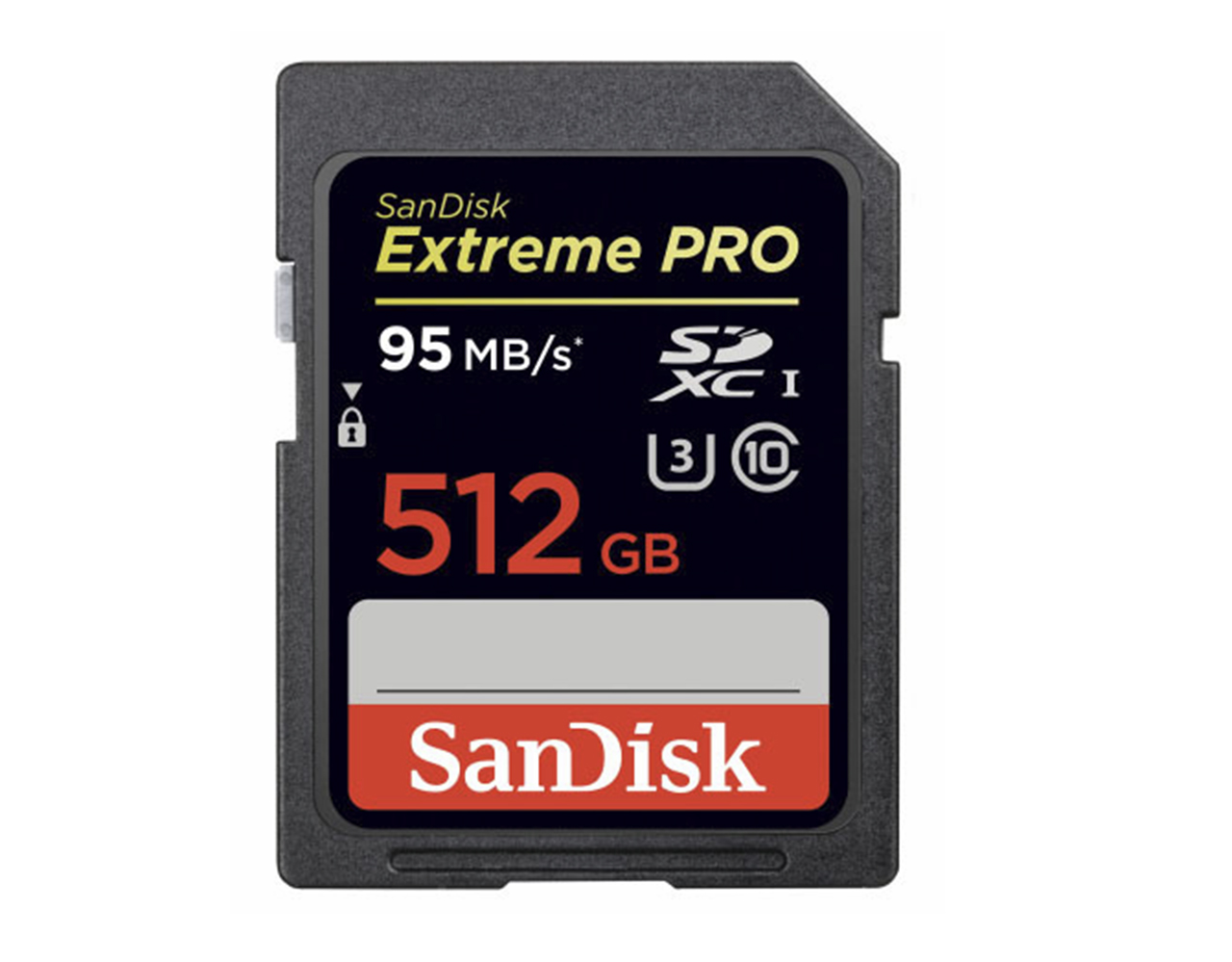
We always need a Extreme high-capacity SD cards for the our New Cameras that can record 4K videos, which requires a very high memory card to hold all these videos together. SanDisk has now announced a new card that should make the life of any videographers a bit easier.
Today, SanDisk has announced the world's first 512GB SD card, that's half-a-Terabyte in a postcard size chip. Insert two of these in a camera that support two cards and you have a full 1 Terabyte of storage space available at your disposal.
The 512GB Extreme PRO UHS-I SDXC card is rated at a write speed of 90MB/s and a read speed of 95MB/s, which should be enough for high bitrate 4K recording or high framerate burst shooting. The card is temperature proof, shock proof, waterproof and X-Ray proof and comes with SanDisk's usual lifetime warranty and RescuePRO Deluxe data recovery software.
Unfortunately, It's Price is Extreme too, the 512GB Extreme PRO will cost around $799.99. But if you are someone who invests in expensive camera gear and can afford to spend on fast, spacious storage options, then this is worth considering.
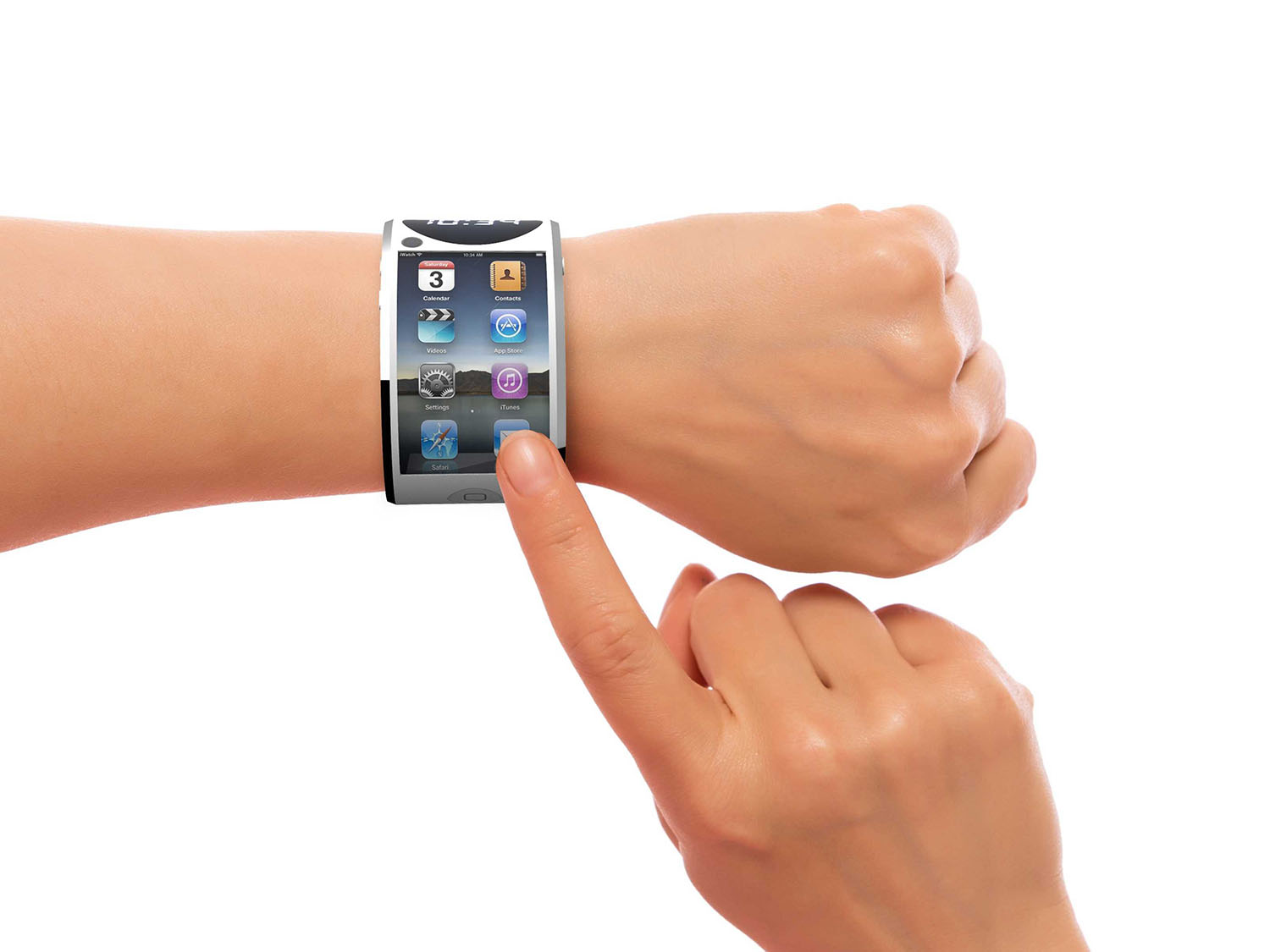
Tech analyst, John Gruber, has a good reputation when it comes to leaking information about Apple devices. So when he says to expect the long-awaited Apple iWatch to finally see the light of day next month, there is a very good chance that it will actually happen. Apple is holding an event on September 9th that is expected to unveil the Apple iPhone 6. It is possible that the iWatch will also be introduced at that time.
By July of last year, Apple had trademarked the iWatch name in a number of countries. The wearable is expected to come out of the box with a number of sensors that will allow it to capture health-related metrics such as heart rate, blood pressure and possibly blood glucose readings. That information can be sent to Apple's Health app, where it will be analyzed. The app will debut on iOS 8.

Apple held its ‘Time Flies' event on September 15, 2020, to release a range of new devices and updates. The main highlights were the Apple Watch and iPad, as expected, while the new iPhone 12 didn't make an appearance. We have already talked about its release date, pricing, and a few leaked features. The Apple event was held yesterday, starting at 10 am PDT. If you have missed the event for some reason, you can still watch it on second-generation Apple TV or YouTube.
Some of the major announcements were Apple Watch Series 6, a new feature called family setup, Apple Fitness++, Apple One, and Apple iPad. There were two iPads. There was an update to the entry-level Apple iPad. This gets updated to the A12 Bionic so it's going to be more powerful and fast than the previous model. There is a new iPad Air, which borrows some features from the iPad Pro. The device is powered by a new and fast A14 Bionic processing chip inside and has a 10.9-inch display with a TouchID button on the side of the display. There is a USB-C port and it supports the Apple Pencil.
Apple One is the company's new way of bundling up Apple services into a small package for a monthly subscription package. There will be other options for packages covering the essential other features like Apple Music, Apple TV+, Apple Arcade, and access to 50GB of iCloud storage for just $14.5 a month through to a family version. At the top end, you can get a 2TB of iCloud storage and access to News+ and Fitness+ too - but that would cost you $29.95 a month.
Apple Fitness is a great option for anyone interested in Apple's health-related services. The subscription service is based around the Apple watch and will let you find and do workouts, according to the user's requirements. You will be able to get coaching from fitness trainers on your Apple Tv, iPhone, or iPad, while your watch tracks your metrics and displays those on the screen. This seems great for today's age where everyone is worried about their health.
Apple introduced a new series in the Apple watch SE. This isn't the same as Apple Watch 6, but it does get the new altimeter. It's going to be more like an affordable version of Apple watch 6. The star of the Apple event was the Apple watch series 6. There weren't many design changes, but adds a new headline feature, blood oxygen saturation monitoring.
With the latest device, you get a brighter display which even works great outdoors. Apple watch series 6 is much more powerful than its predecessor due to the latest processor. You can even measure your blood oxygen level with the new revolutionary sensor and app. Take an ECG anytime, anywhere. See your fitness metrics at a glance on your wrist for a healthier, more active, and active life.

The most popular social network website, Facebook, has changed its Logo... A minor change to the logo's font, However, you will still see the iconic "F" logo that one doesn't change but wherever else the full name is used, you will eventually see a new wordmark designed in collaboration by Facebook's in-house design team and Eric Olson of Process Type Foundry.
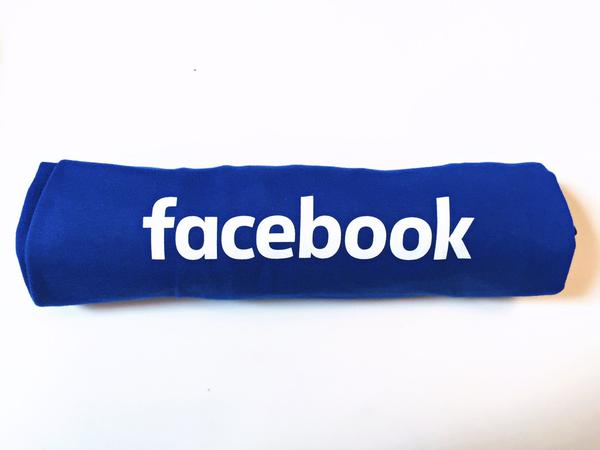
Facebook's New logo used a font which is more simple, here's what the facebook team said about this new logo:
When Facebook's logo was first created in 2005, the company was just getting started and we wanted the logo to feel grown up and to be taken seriously. Now that we are established, we set out to modernize the logo to make it feel more friendly and approachable. While we explored many directions, ultimately we decided that we only needed an update, and not a full redesign. We worked with Eric Olson - whose typeface Klavika was used in the original logo - and developed a custom typeface to reflect where we are now and where we are headed.
- Josh Higgins, Facebook Creative Director

Good News! Sony has Officially released a list of all its Xperia devices that has been confirmed to receive the Android 6.0 Marshmallow update.
List of Sony Xperia devices to get Marshmallow 6.0 update:
• Xperia Z5
• Xperia Z5 Compact
• Xperia Z5 Premium
• Xperia Z4 Tablet
• Xperia Z3+
• Xperia Z3
• Xperia Z3 Compact
• Xperia Z3 Tablet Compact
• Xperia Z2
• Xperia Z2 Tablet
• Xperia M5
• Xperia C5 Ultra
• Xperia M4 Aqua
• Xperia C4
The update will be available as Over-the-air (OTA), However, The company didn't provide a specific time for the roll-out yet but Sony users should expect it by early next year... depending on their market/region.

Anyone who is even mildly interested about the Android OS knows CyanogenMod for developing and releasing custom ROMs for multiple handsets across numerous brands. The best part is that they often bring latest versions of the Android OS to smartphones which will never receive the same from their original manufacturers. This time around, Steve Kondik has announced the name of the models that will be compatible with the latest CyanogenMod 14.1 beta Night Build, based on Android 7.1 Nougat. Take a look at the list below.
LG Nexus 5X
LG G3
LG G4
Motorola Moto G 4G
Motorola Moto G2
Motorola Moto G 3rd Gen
Motorola Moto G4
Motorola Moto G4 Plus
Samsung Galaxy S5
Xiaomi Mi 3
Xiaomi Mi 4
OnePlus 3
ASUS ZenFone 2
Huawei Nexus 6P
If your device isn't listed, do not be disappointed as more models will be added to the list in the coming week. Before you download and install it though, keep in mind that it isn't a stable version and the ROM still is missing a few features (Themes for example). Many of the glitches will be patched and missing features will keep getting added in the coming updates.
Saikat Kar (tech-enthusiast)
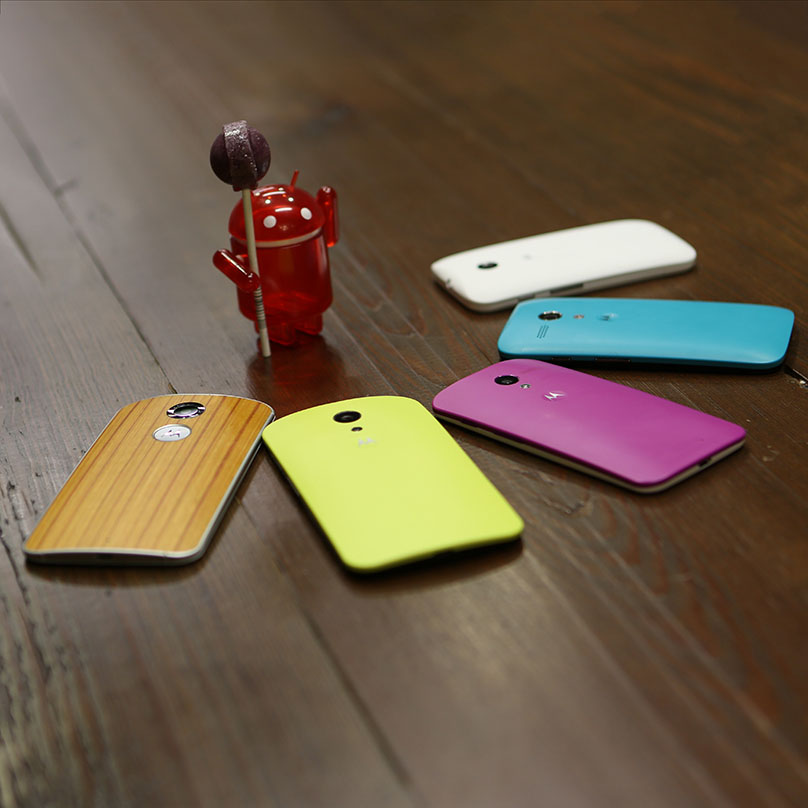
Motorola already have a Lollipop Star on the Nexus world, the Nexus 6. However, the company will update most of its latest smartphones models to Android 5.0 Lollipop. Today, Motorola announced its list of Devices that will get the Lollipop update.
If your Motorola smartphone was not updated to Jellybean, what on God's Earth would make you think that it will receive Android 5.0? Similarly, you can rule out models that failed to taste the chocolat goodness of Android 4.4 KiKat.

Currently, Motorola models due to receive Android 5.0 Lollipop include the Motorola Moto X (both 2013 and 2014 models), the Motorola Moto G (both 2013 and 2014 models), Motorola DROID Ultra, Motorola DROID MAXX, Motorola DROID Mini, Motorola Moto G LTE, and the Motorola Moto E.
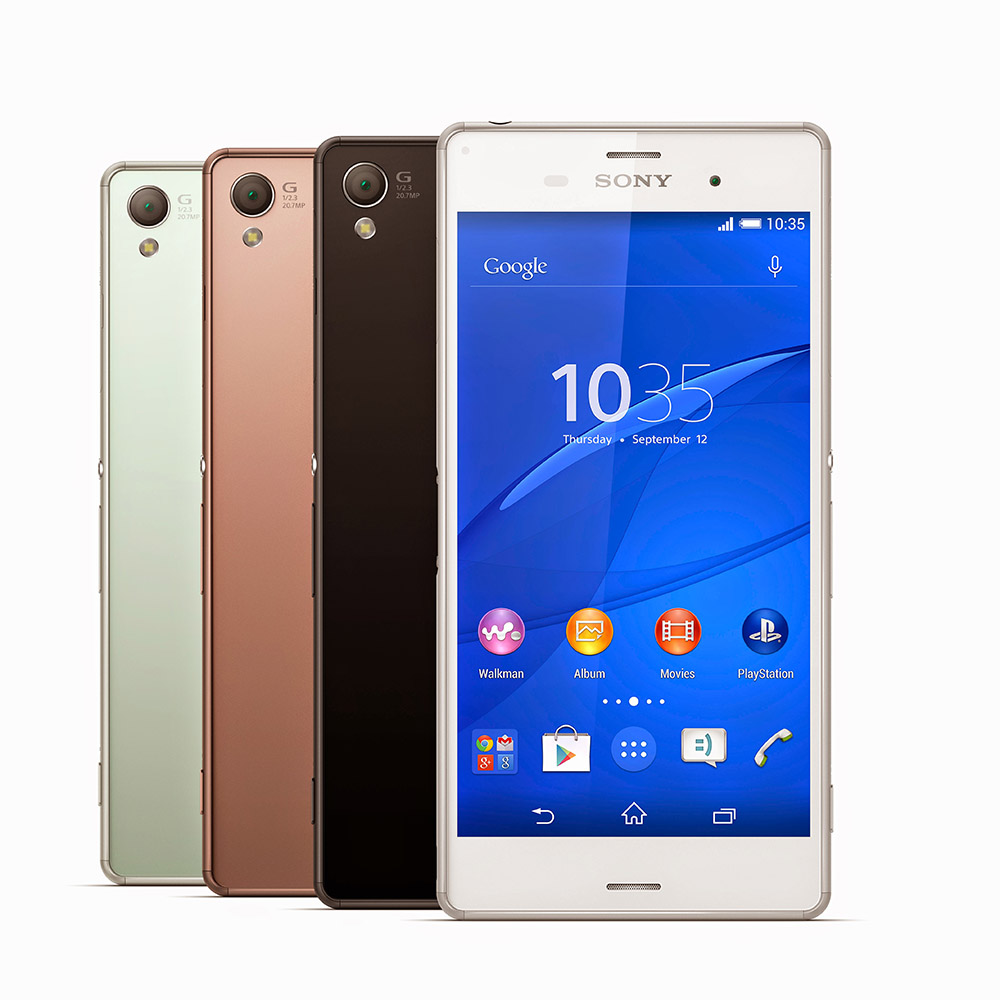
The anticipated Sony Xperia Z3 is Now official, just 6 months after its latest Xperia Z2 flagship. Also Sony revealed is the sequel to the very capable Xperia Z1 Compact, the Xperia Z3 Compact.
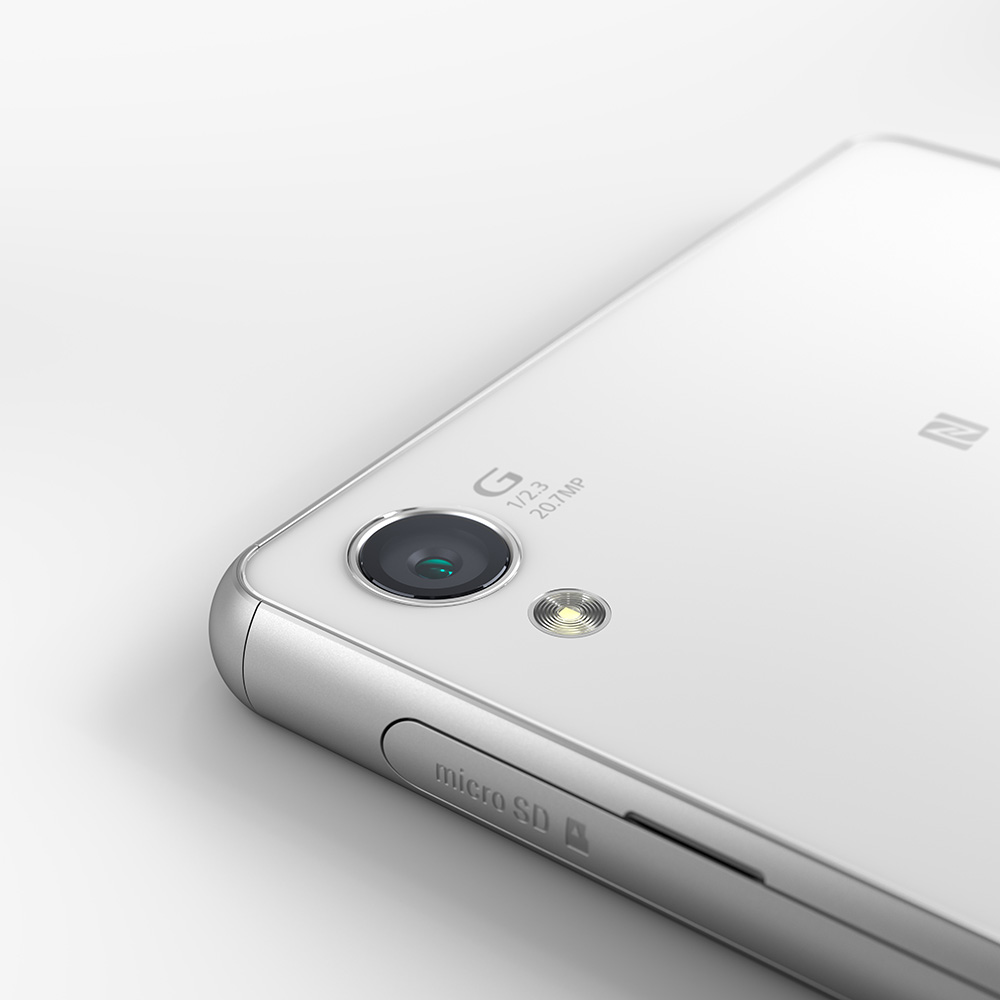
The Sony Xperia Z3 runs on a quad-core 2.5GHz MSM8974AC Snapdragon 801 chip, alongside 3GB of RAM and Adreno 330 graphics. There's no 2K screen to be found, as all the new members of the Xperia family feature 1080p displays. The Z3 comes in at 5.2 inches, just like its predecessor.
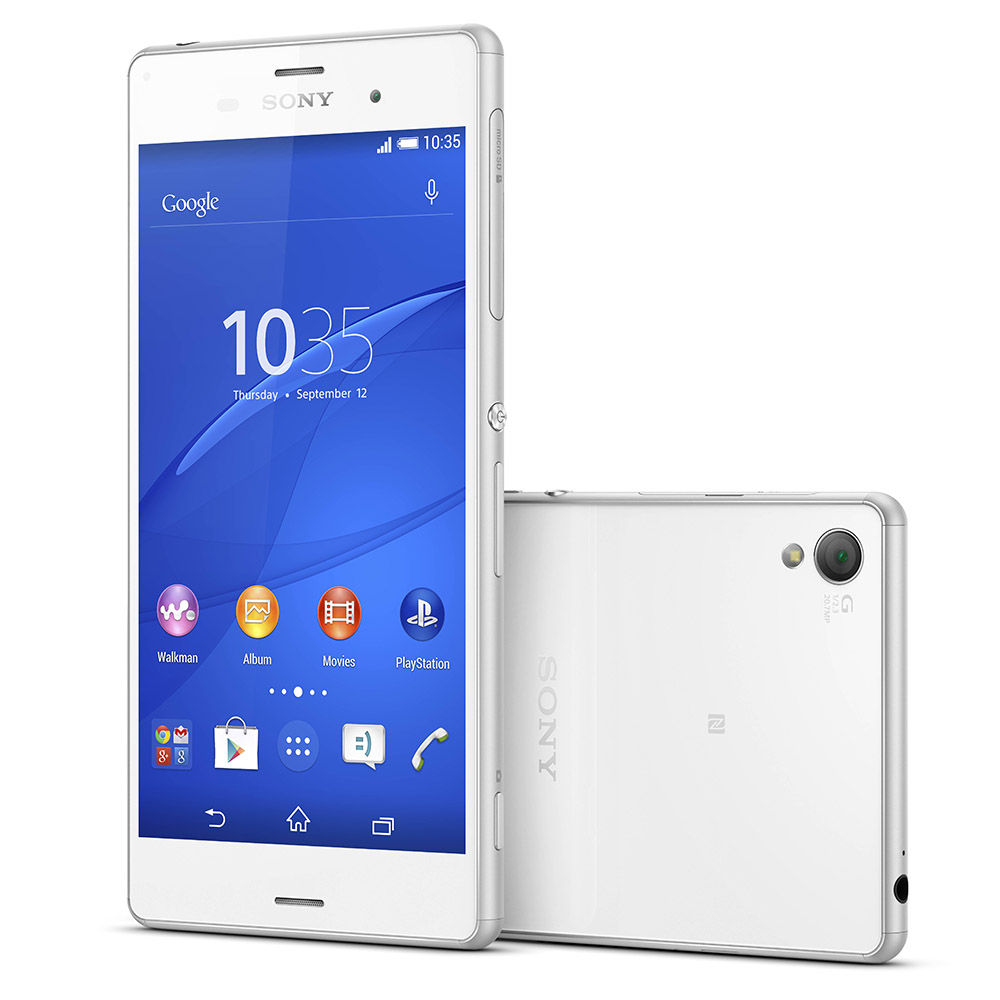
Sony was able to trim off about 1mm from all of its dimensions as well as 11g off its weight, making it lighter and thinner than the Xperia Z2. The Omnibalance design has been furthered by the inclusion of a high quality metal frame to complement the glass front and rear panels.
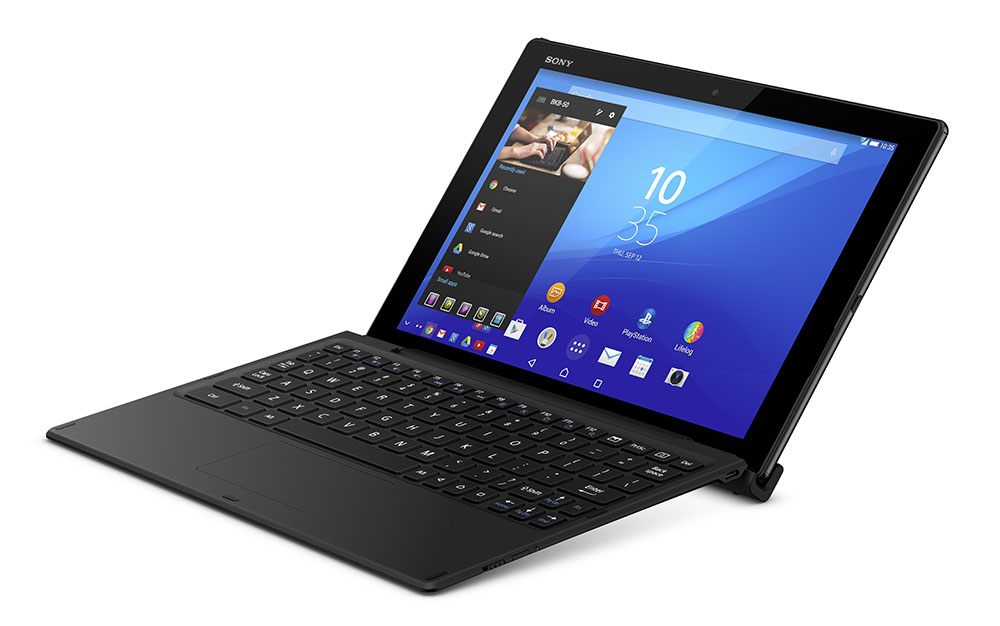
Sony has just announced a New High-end tablet at the MWC 2015, Sony Xperia Z4 Tablet comes with a 10.1" IPS display of 2560 x 1600 pixels resolution, which results into a nice pixel density of 300ppi. The display is enhanced by Sony's Triluminos technology and X-Reality Mobile engine.
The slate is powered by the Qualcomm's latest and greatest Snapdragon 810 chip, which packs an octa-core 64-bit processor with four Cortex-A57 cores clocked at 2.0GHz and four Cortex-A53 working at 1.5GHz. The GPU in charge of graphics is Adreno 430 and there is 3GB of RAM onboard.
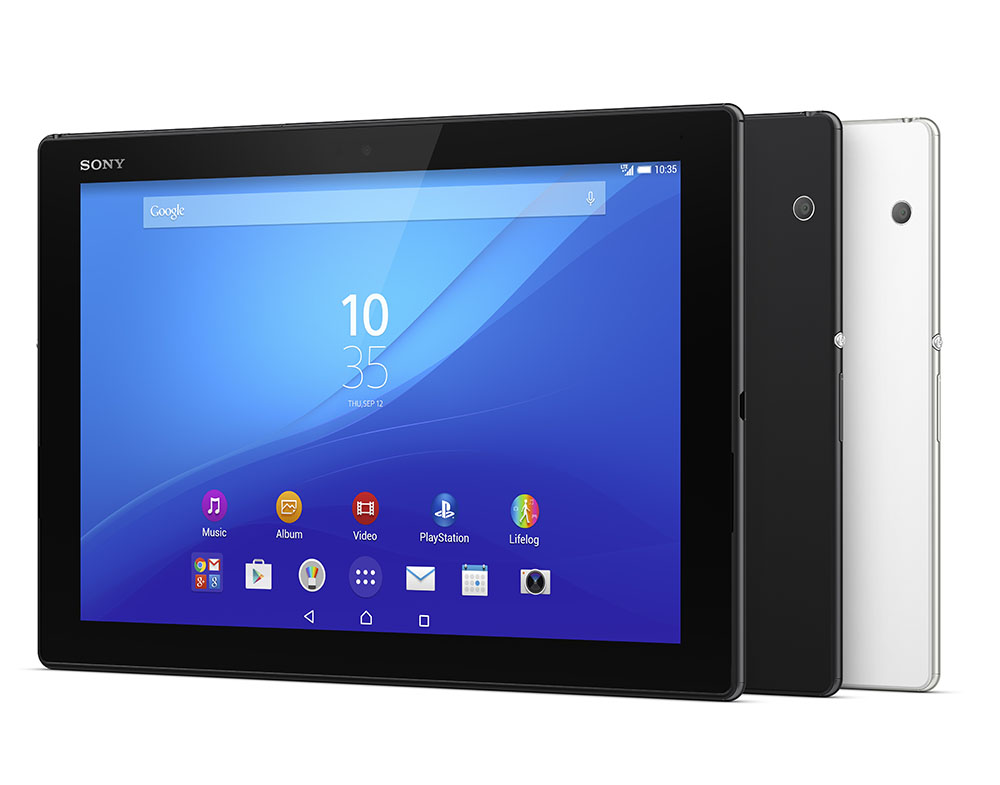
The rest of the Xperia Z4 Tablet specs include 32GB expandable memory, a rear 8MP Sony ExmorRS camera and 5MP wide-angle front selfie snapper, stereo speakers and GSM, 3G and 4G LTE connectivity. The slate is powered by a 6,000 mAh battery and Sony says it will last 17 hours on video playback.
Sony Xperia Z4 Tablet is IP68-certified, which translates in to a dust-tight shell and waterproof design with endurance for up to 30 minutes into 1.5m deep fresh water.
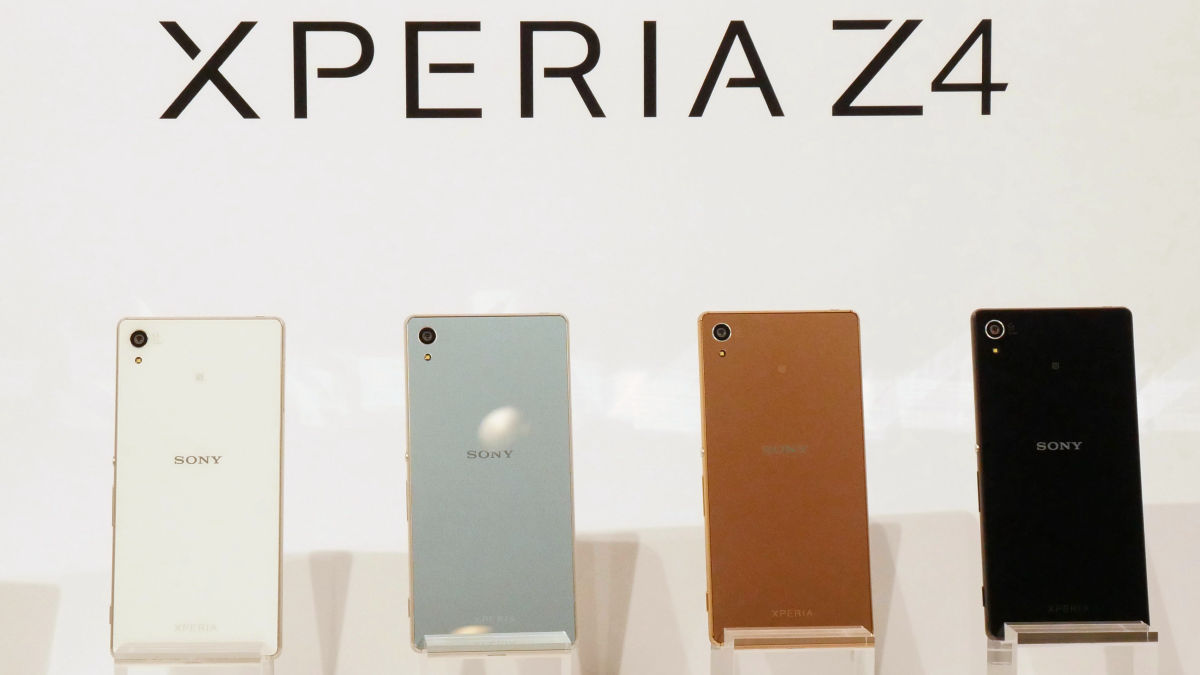
Finally, Sony officially launched the Xperia Z4 in Japan today. Sadly, the Japanese giant announced that Sony Xperia Z4 will be Exclusive to Japan Only and will release a another flagship for the rest of the world.
The Sony Xperia Z4 has a slightly tweaked OmniBalance design with 6.9mm profile with a metal frame running around the sides. Just like the predecessor, the Xperia Z4 brings IP68 certification for dust and water resistance.
Sony sticks with 5.2-inch 1080p display and still hasn't succumbed to the QHD wave. Under the hood, it houses a 64-bit octa-core Qualcomm Snapdragon 810 chipset armed with 3GB of RAM and 32GB of on-board storage. A microSD card slot will let you expand the storage by up to 128GB. By default, the smartphone runs Android 5.0 Lollipop.
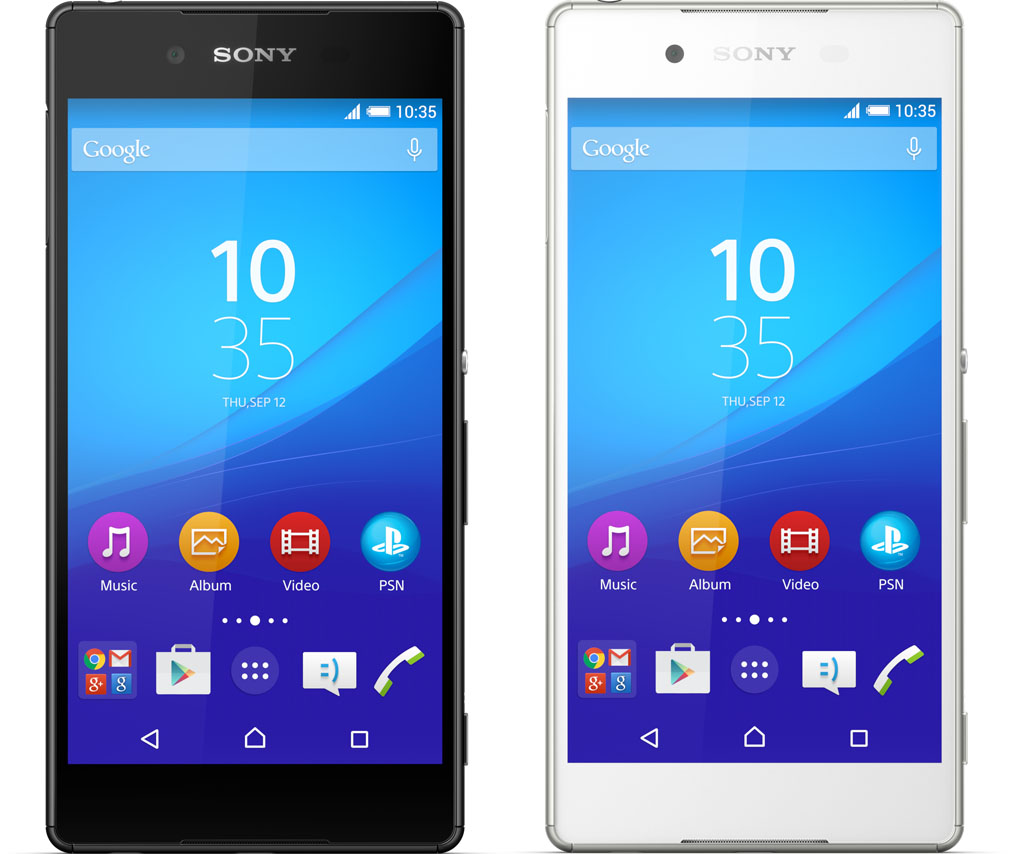
At the back is a 20.7MP camera with Exmor RS image sensor coupled with the BIONZ image processing engine. Clad with G Lens, the 1/2.3-inch image sensor can offer sensitivity all the way up to ISO12800 to capture well exposed images in poorly lit environments. Along with the usual set of HDR and the imaging modes, Sony has added new 'Cooking Mode' for clicking the best images of your food.
Front side 5MP wide-angle camera with Exmor R sensor has been optimized to take selfies along with new shake feature to record videos with reduced shake.
The Xperia Z4 now supports high quality audio performance for wireless playback. Weighing 144 grams, the Xperia Z4 packs a 2,930 mAh non-removable battery. As of now, there is no word on the price and the launch of this flagship in other markets.
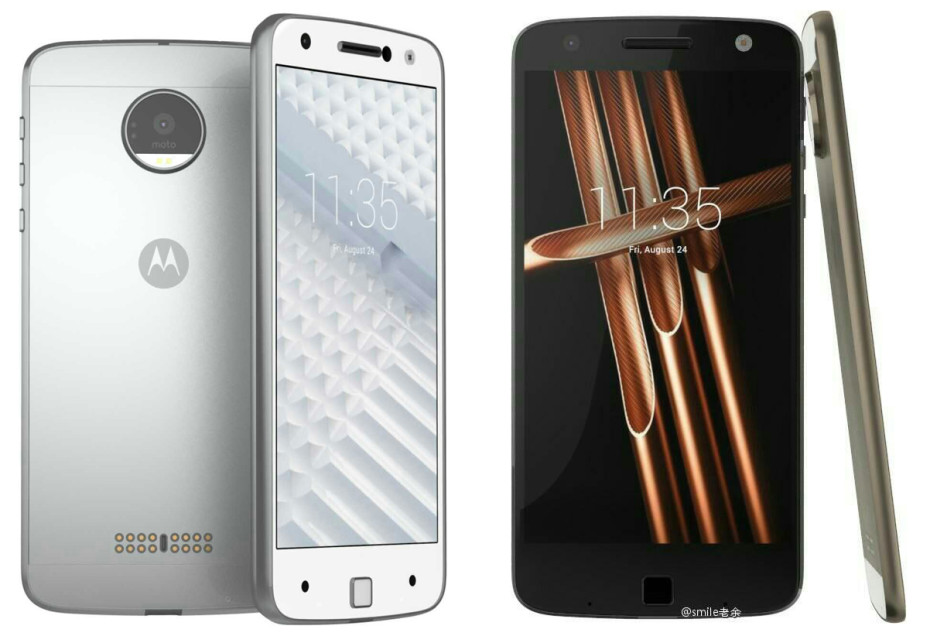
Lenovo has just unleashed a brand new series, which will replace the Moto X series of smartphones, starting from 2016. Both the phones in the new Z-series will come with top tier specs like a SD 820 CPU, a 5.5-inch QHD panel, 4GB of RAM and even the choice for 32GB/64GB in-built storage (along with expandable SD card slots). The regular Moto Z will sport a 13-megapixel rear sensor with laser autofocus, optical image stabilization and a dual tone LED flash for pitch dark conditions. On the front, there's the 5-megapixel snapper with a dedicated selfie-flash and a wide angle lens for group selfies. All this will be powered by the Quick charging 2,600mAh battery inside the Z.
The Moto Z Force has the bigger 3,500mAh battery and a shatterproof glass on the front. Lenovo calls the glass "ShatterShield" and they are confident that it cannot be broken by even the roughest of falls. The thicker and more premium device also features a higher resolution 21-megapixel sensor with phase detection laser autofocus, optical image stabilization and an aperture of f/1.8 for low-light photography. In spite of the flagship specs, what we did not like is the missing headphone jack that we have grown accustomed to. Although an USB Type-C to headphone adapter is included in the box, it means that you cannot simultaneously use the Type-C port for charging or data syncing, while listening to the headphones.

In addition to the missing 3.5mm jack, the two Moto phones also bring something else that the market is just getting accustomed to. Both phones have 16 magnetic dots at the lower-back area and they are equipped to connect with the "Moto Mods." Similar to what we saw with the LG G5 modular phone that was released earlier this year, the Moto Mods are modular accessories created specifically for the Moto Z smartphones to enhance the device's already impressive capabilities. There's the InstaShare Projector mod and some stylish case mods, but we found the JBL Soundboost mod to be the most impressive with its twin 3W speakers and a 1,000 mAh battery to boost the phone's usage time.
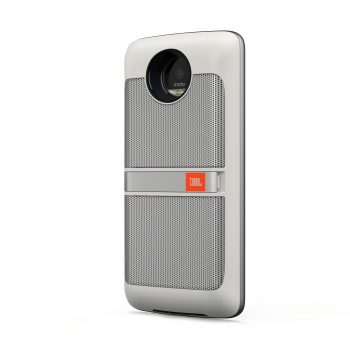
As is evident, the Moto Z and the Moto Z Force has a LOT to offer, but you will have to wait till September to get your hands on one, if you are outside the US. Verizon in the US however, will release their "Droid Editions" sooner.
Author: Saikat Kar (tech-enthusiast)
© 2023 YouMobile Inc. All rights reserved
